- Posted on
- • Lens repairs
Sony FE 90mm F2.8 OSS G - teardown and focus motor replacement
- Author
-
-

- User
- Photo-parts
- Posts by this author
- Posts by this author
-
A very typical failure of a very good lens – the Sony FE 90mm F2.8 G OSS: it’s no longer detected by the camera after a fall.
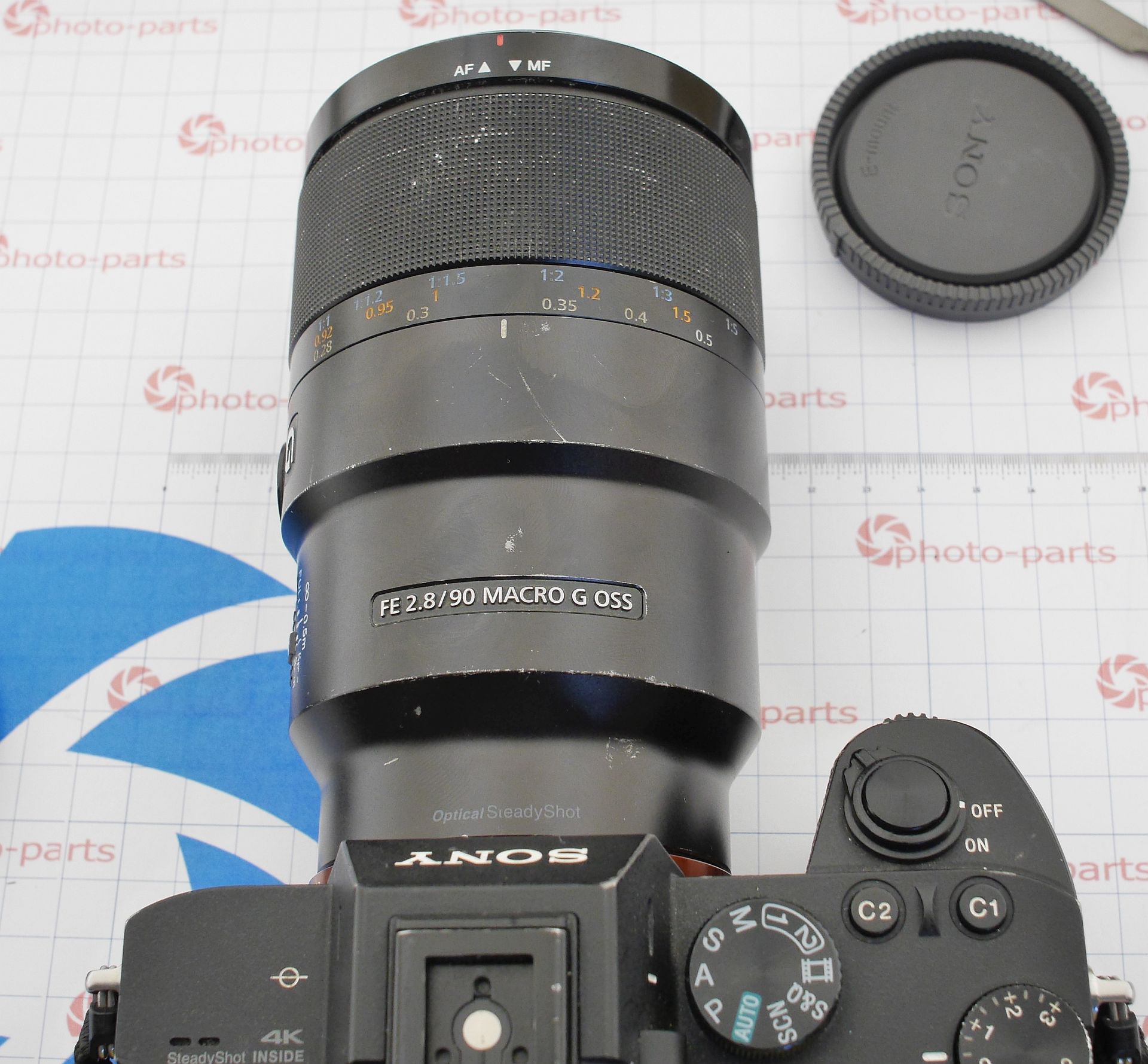
This lens uses Sony’s proprietary focusing technology – Direct Drive Super Sonic Motor (aka DDSSM) – but with a twist: there are two such motors inside.
Essentially, this motor type is an ultrasonic linear actuator, first introduced in exactly this form back in the Minolta/Sony A100, where it was used to move the sensor. The lens is moved along a straight shaft via micro-deformations transmitted through a piezocrystal. The waveform is shaped (a sawtooth pulse with a sharp drop) to allow the lens to move in both directions.
And that’s where the reliability problem lies: the lens mass interacts with the motor, which is not a solid piece and is quite fragile. The motor can literally break – either at the joint between the shaft and the piezoceramic, or across the ceramic itself.
And so this well-used lens clearly ended up in for repair after a fall.
Take note: there are two focusing lens groups in the lens, and two motors as well. One is closer to the sensor, the other – near the front element. Most technicians encountering this lens for the first time don’t realize there’s a second motor behind the front element, and start fixing what isn’t broken. Don’t do that. The rear motor breaks less often because its lens group is lighter. For diagnostics, when connected to a camera, you should look into the lens – the front focusing element should move up and down. If it doesn't move – the motor is dead.
All work on the front lens motor can be done without disassembling the lens from the mount side, but below is the full teardown.
First, remove the decorative ring. A quick homemade tool works well: the lens’s own rear cap, with strips of double-sided tape applied.
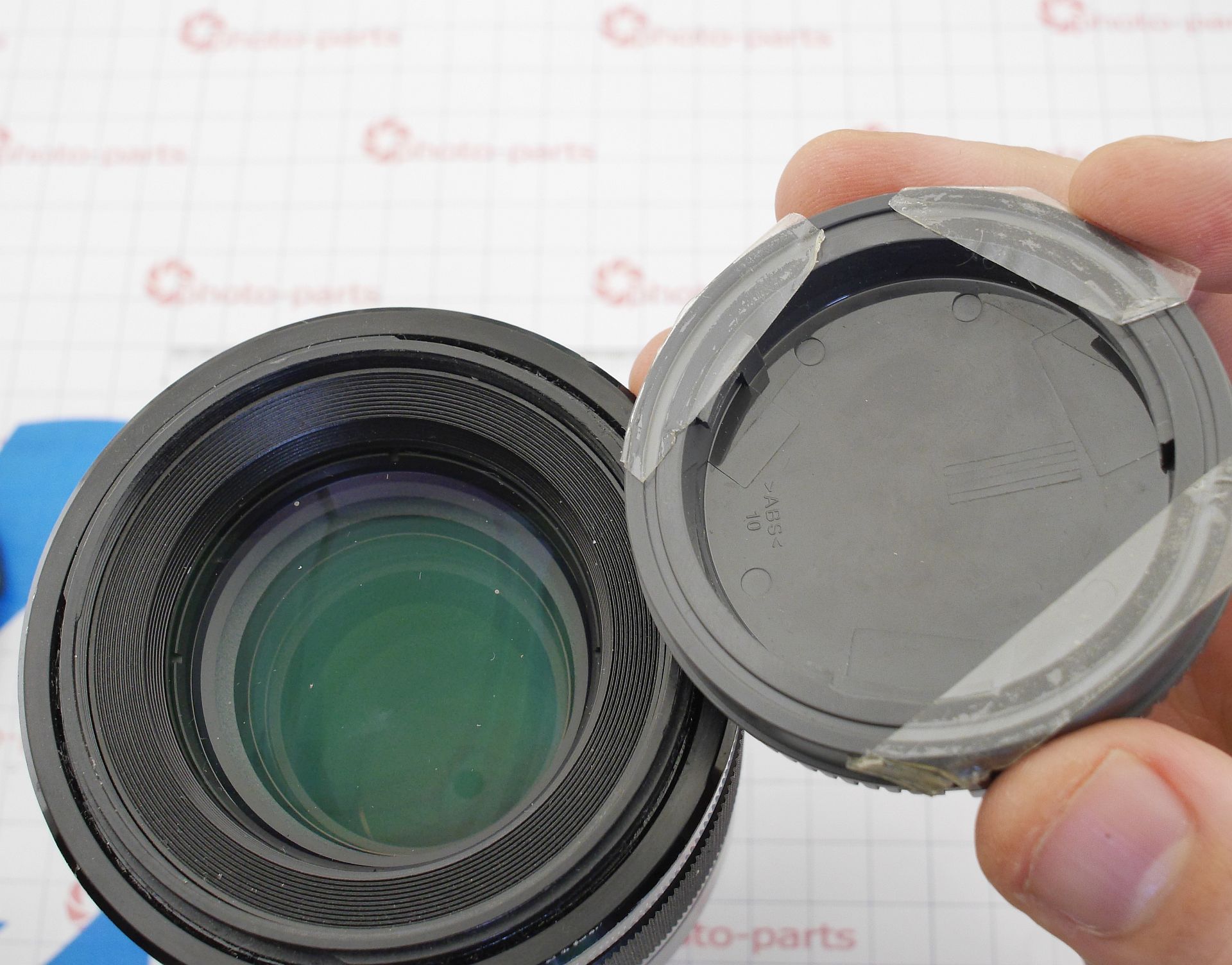
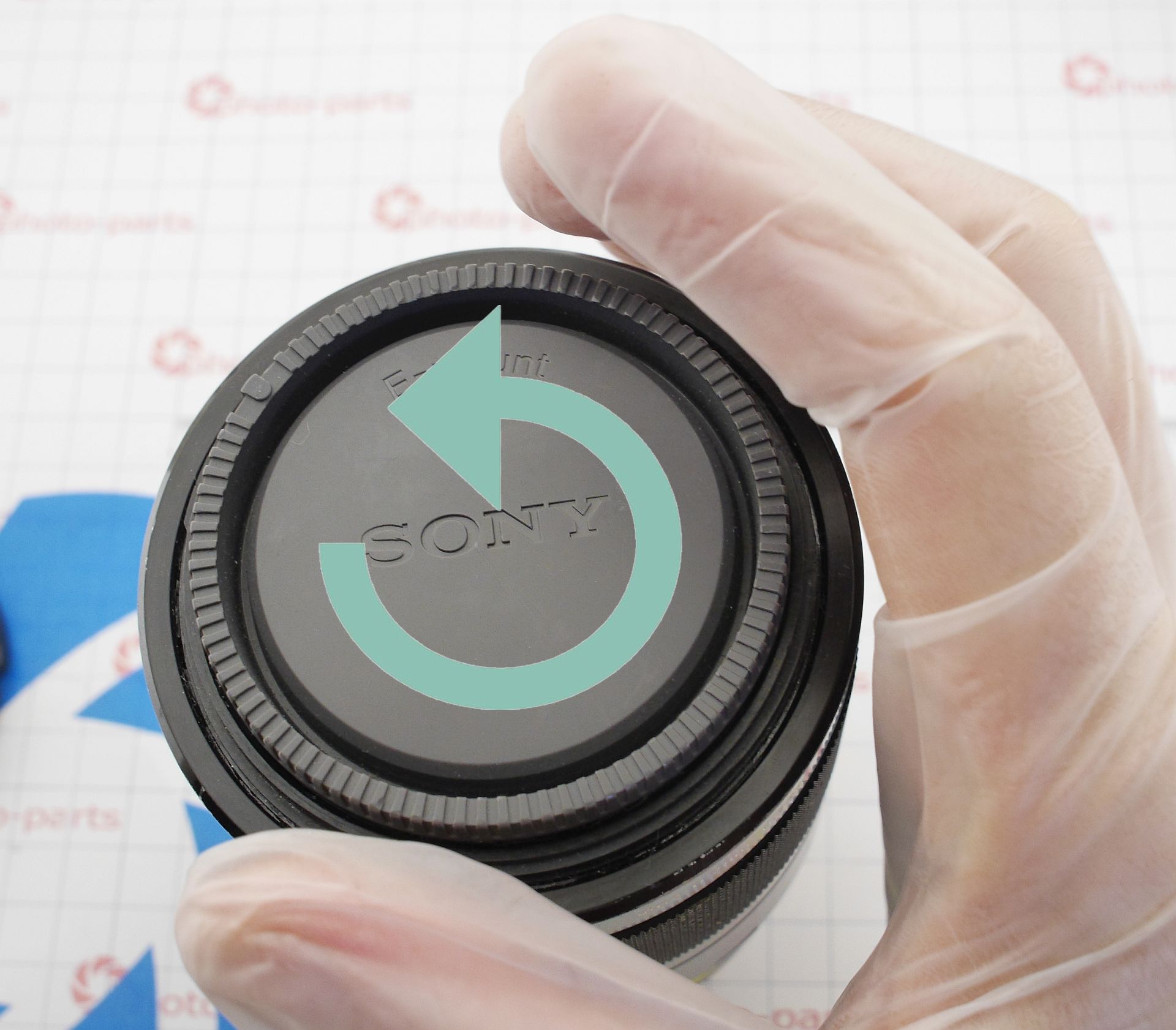
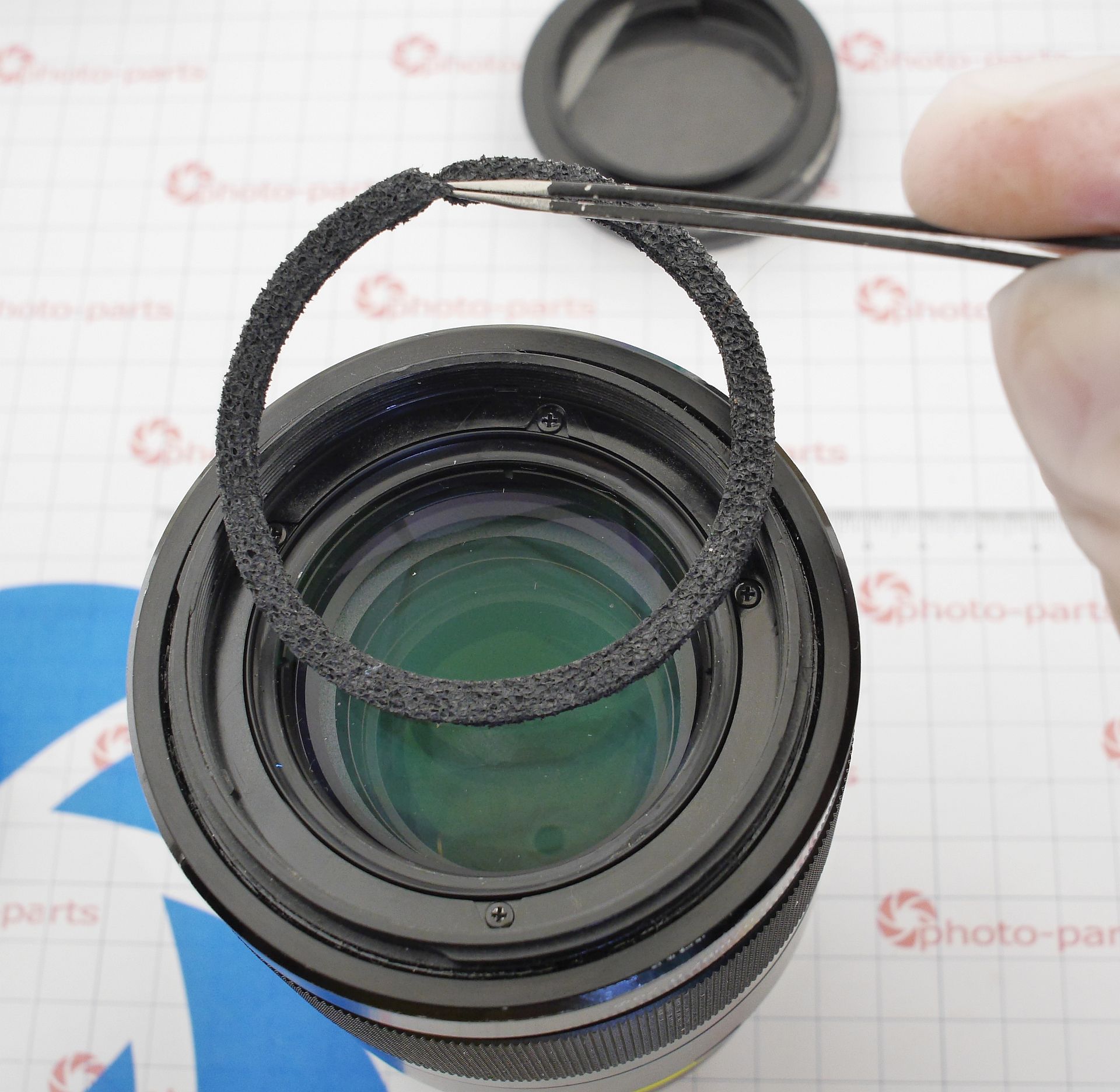
Under the dust seal are the screws holding the filter thread ring. Once unscrewed, you gain access to the first lens group:
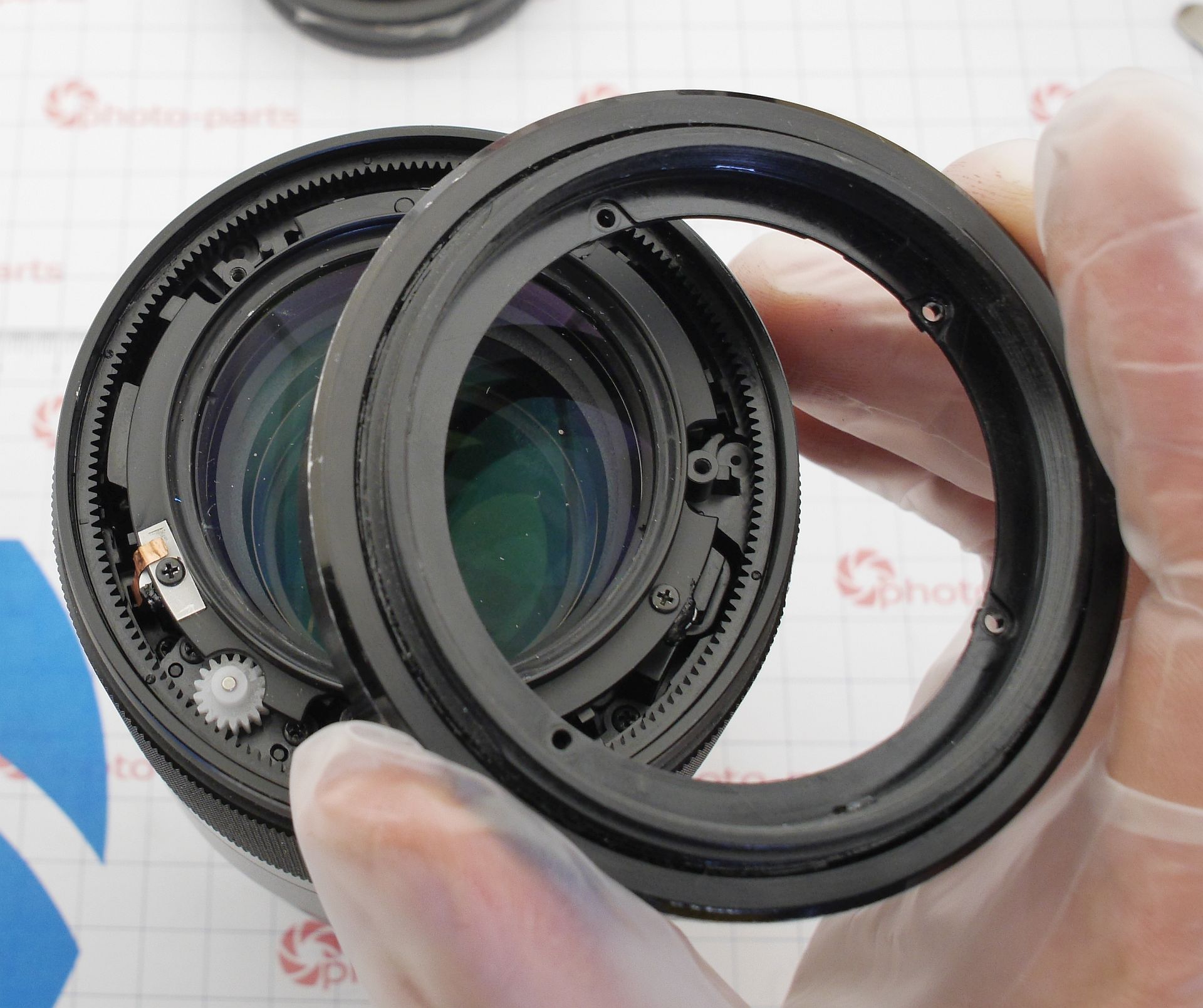
Remove the manual focus ring, front element, and three deep screws that separate the front focus block from the lens base:
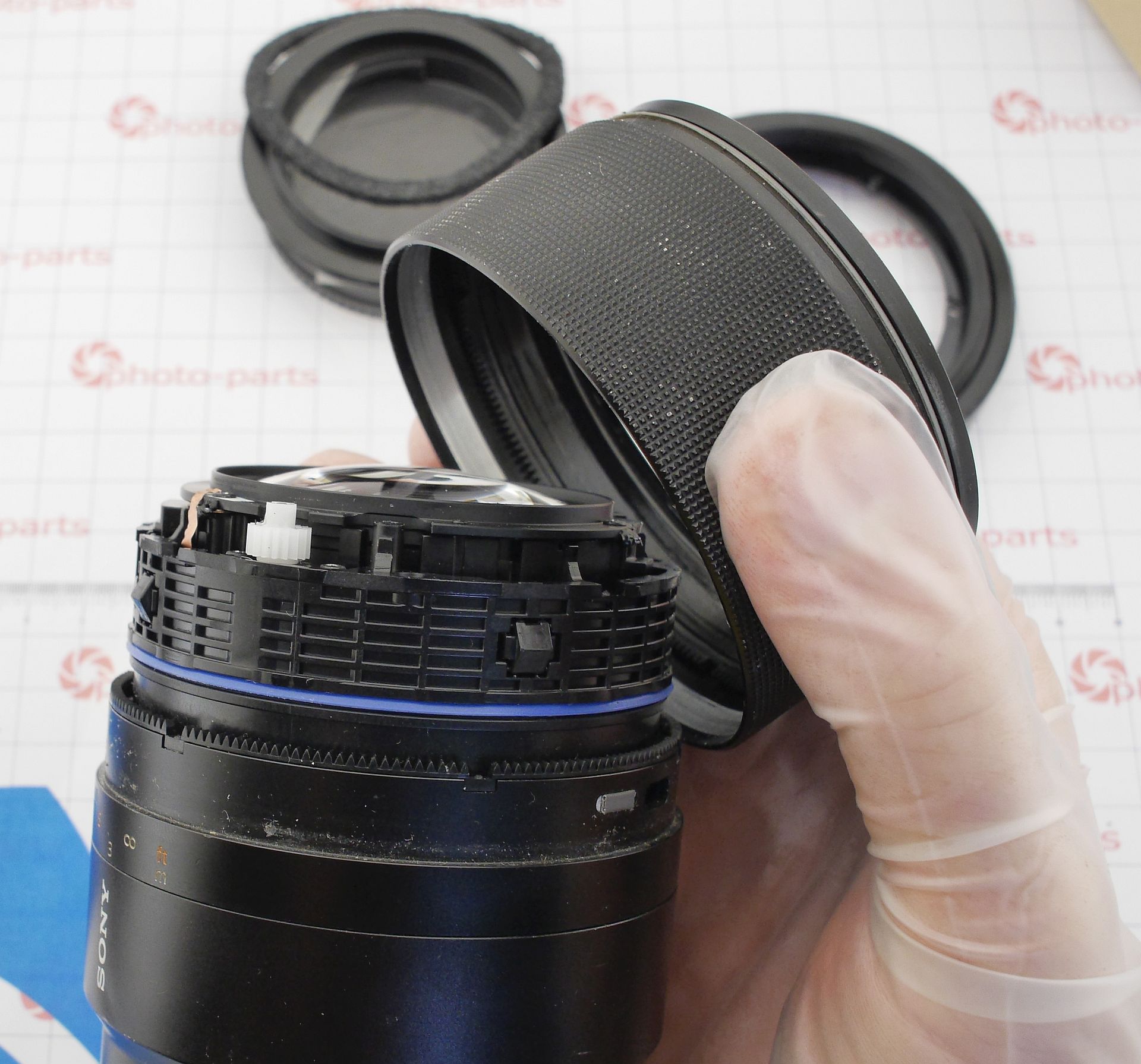
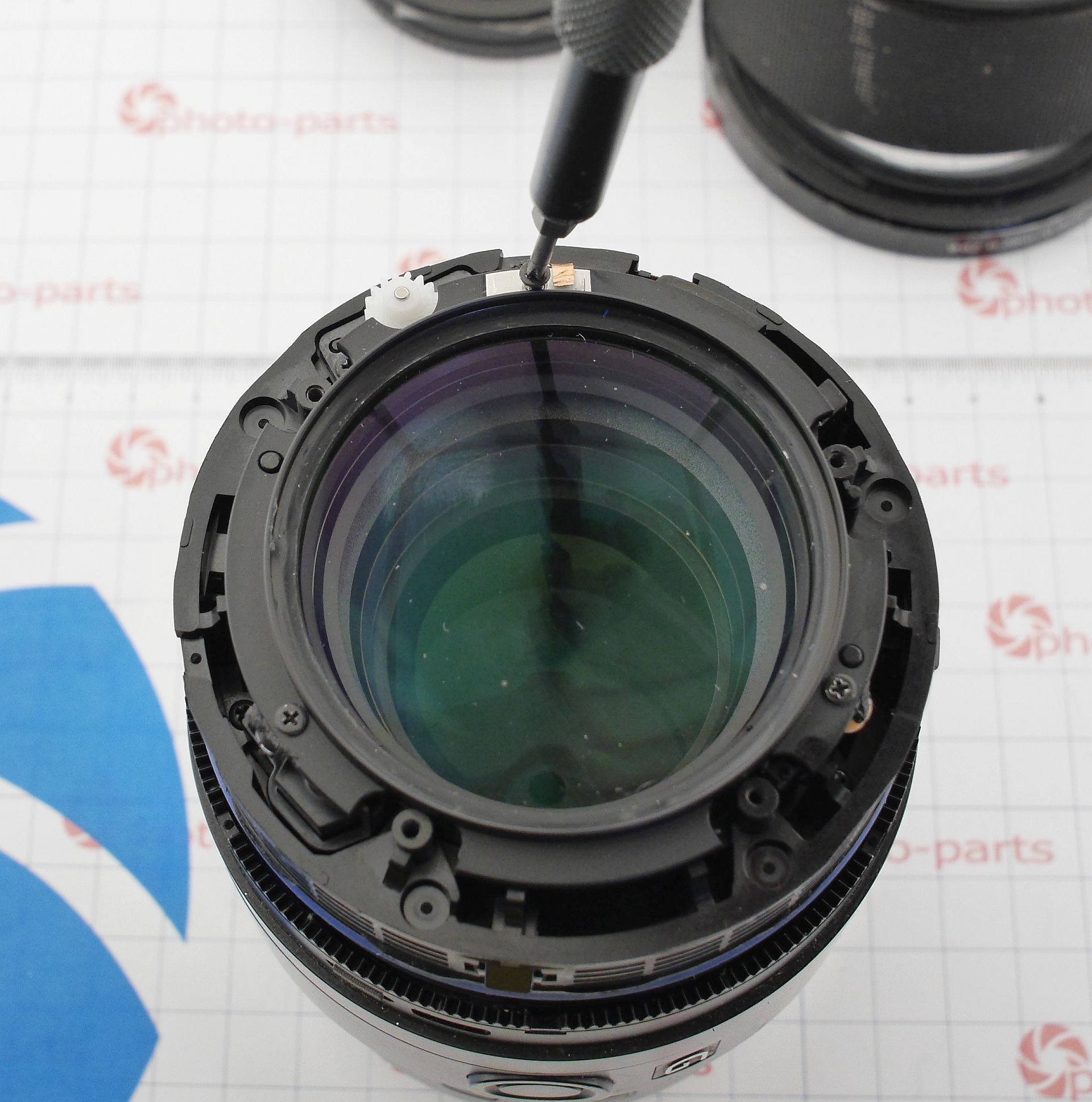
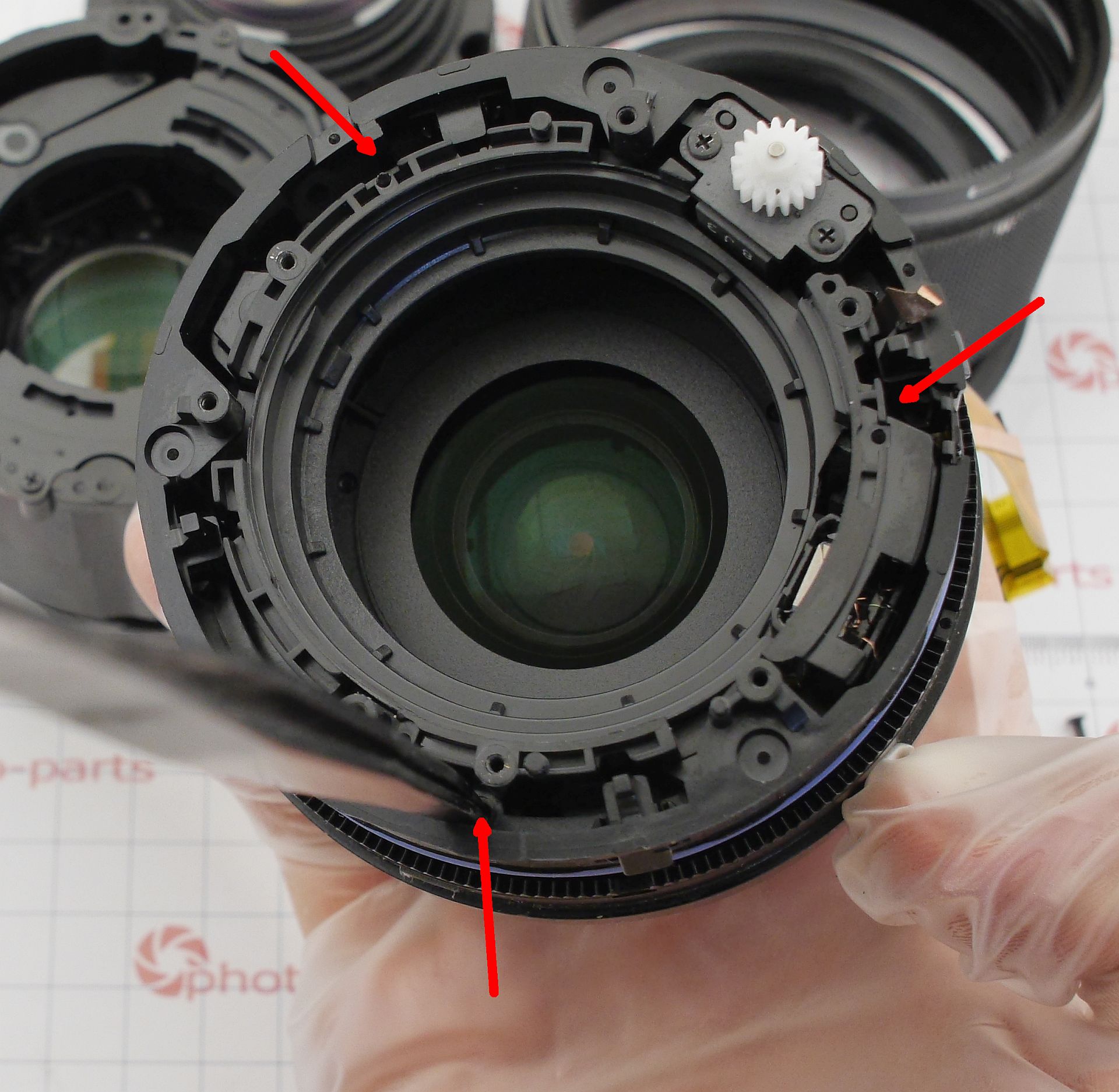
At this point, also remove the manual focus encoder and focus mode switch sensor:

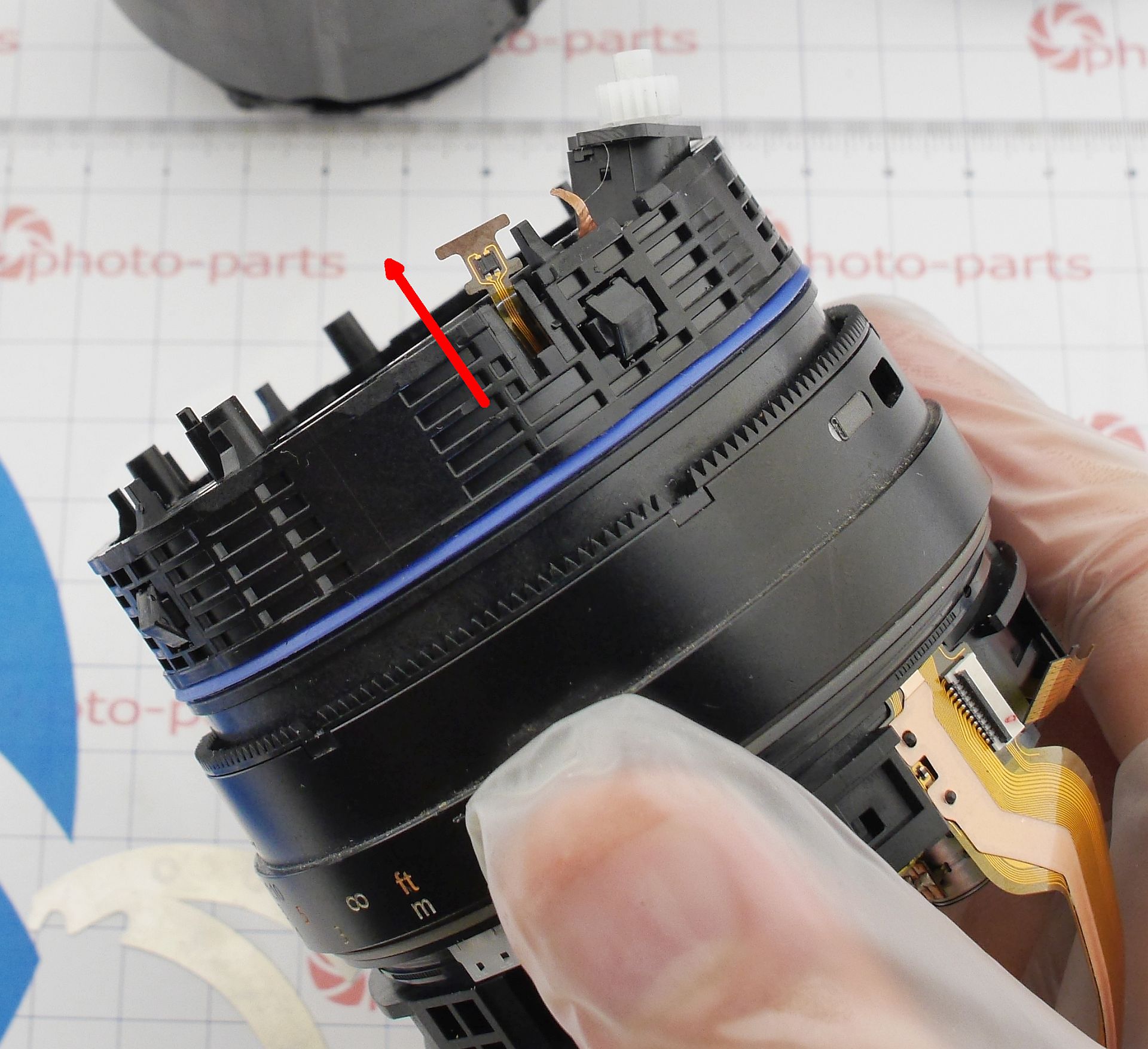
The remaining part of the focus ring lifts upward:
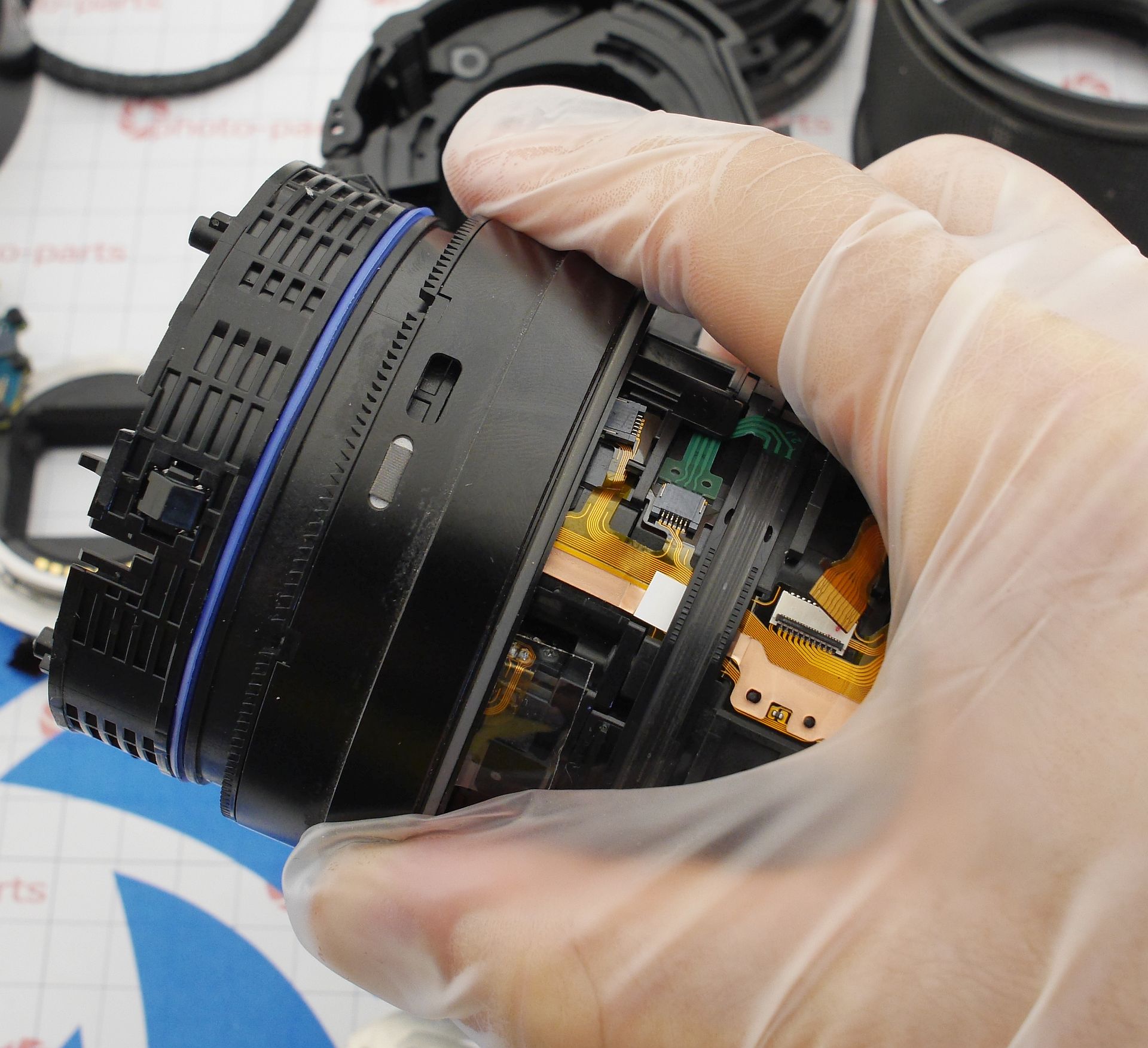
Now’s the time to prepare a replacement: in this case, it’s a brand-new motor supplied by Sony. However, there’s a catch – the motor comes assembled with a focus lens group housing, but without the actual lens. Essentially, extra parts are included that will end up in the trash, since nobody will bother transplanting lenses into a new mount. Alternatively, you can find used motors removed from housings, but who knows how many years and drops they’ve survived. Not recommended. New is much better.
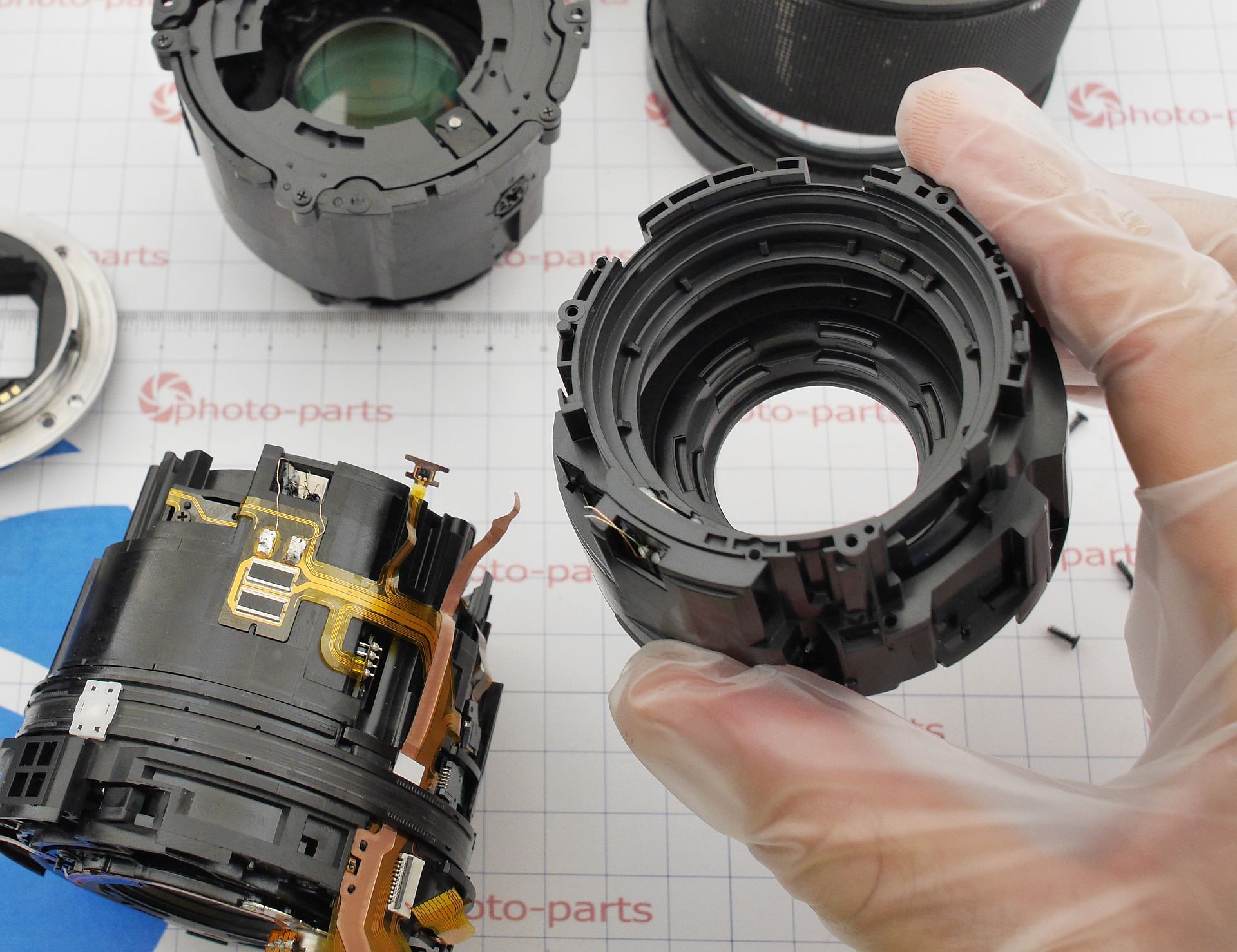
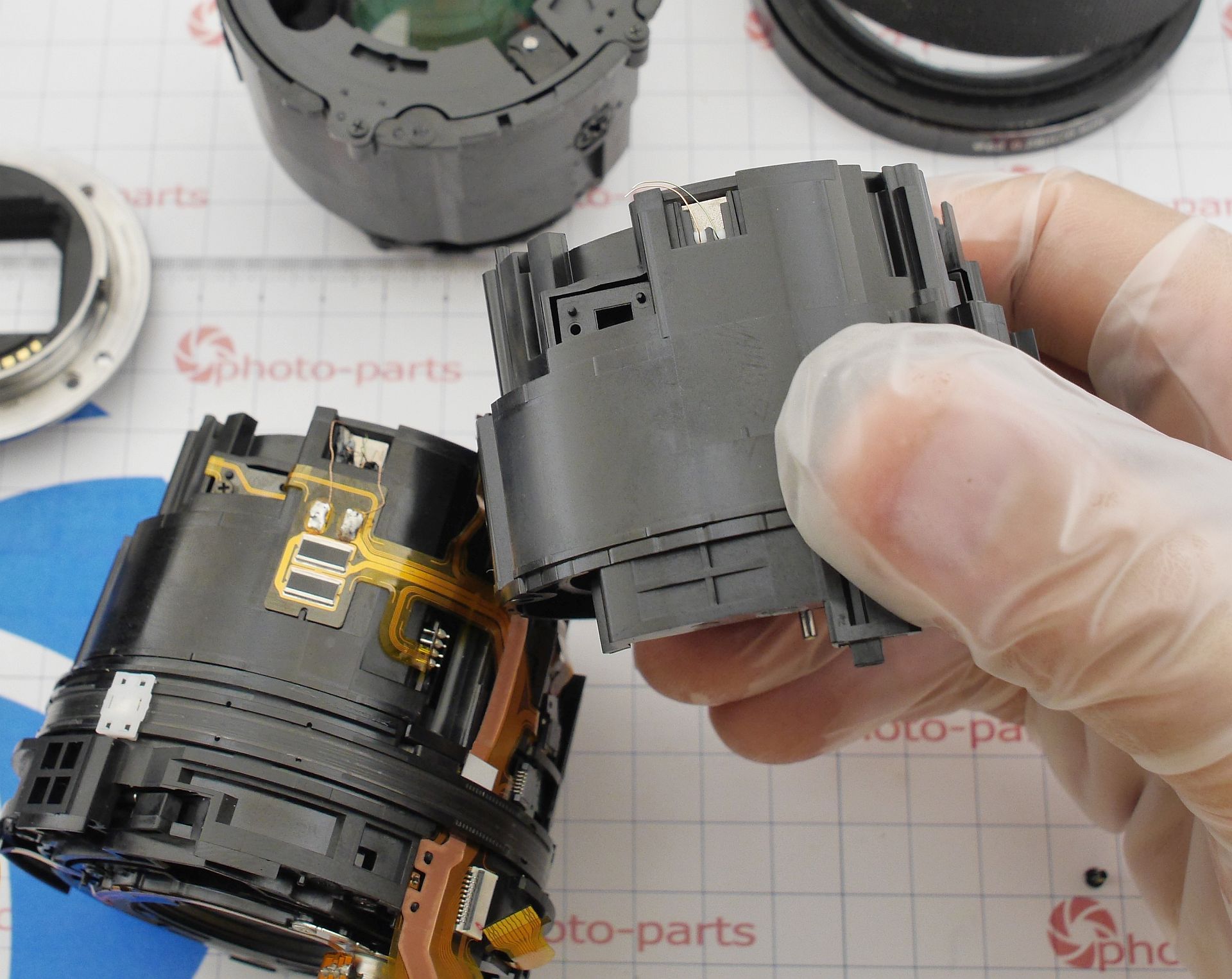
Let’s split open the new motor:
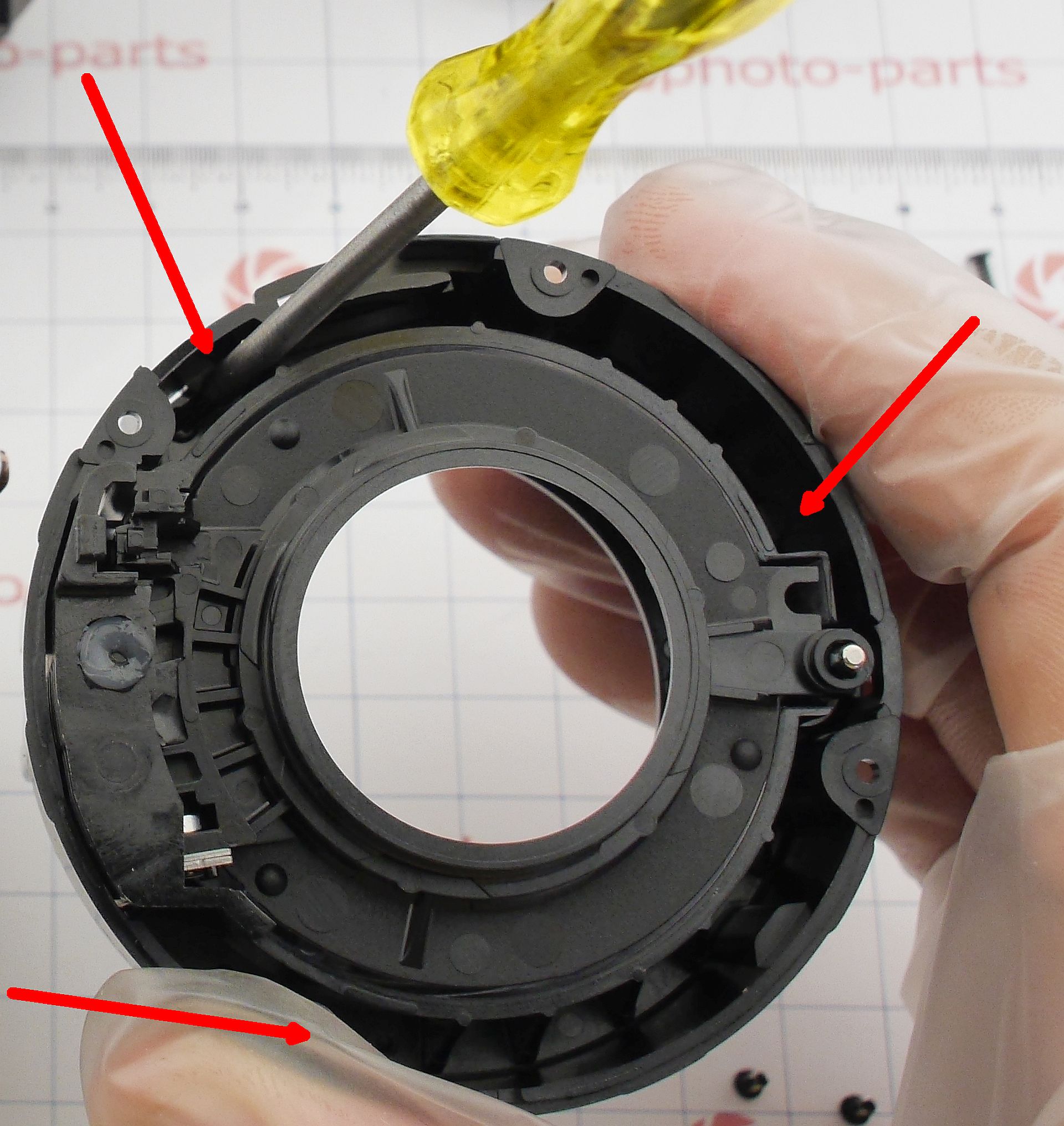
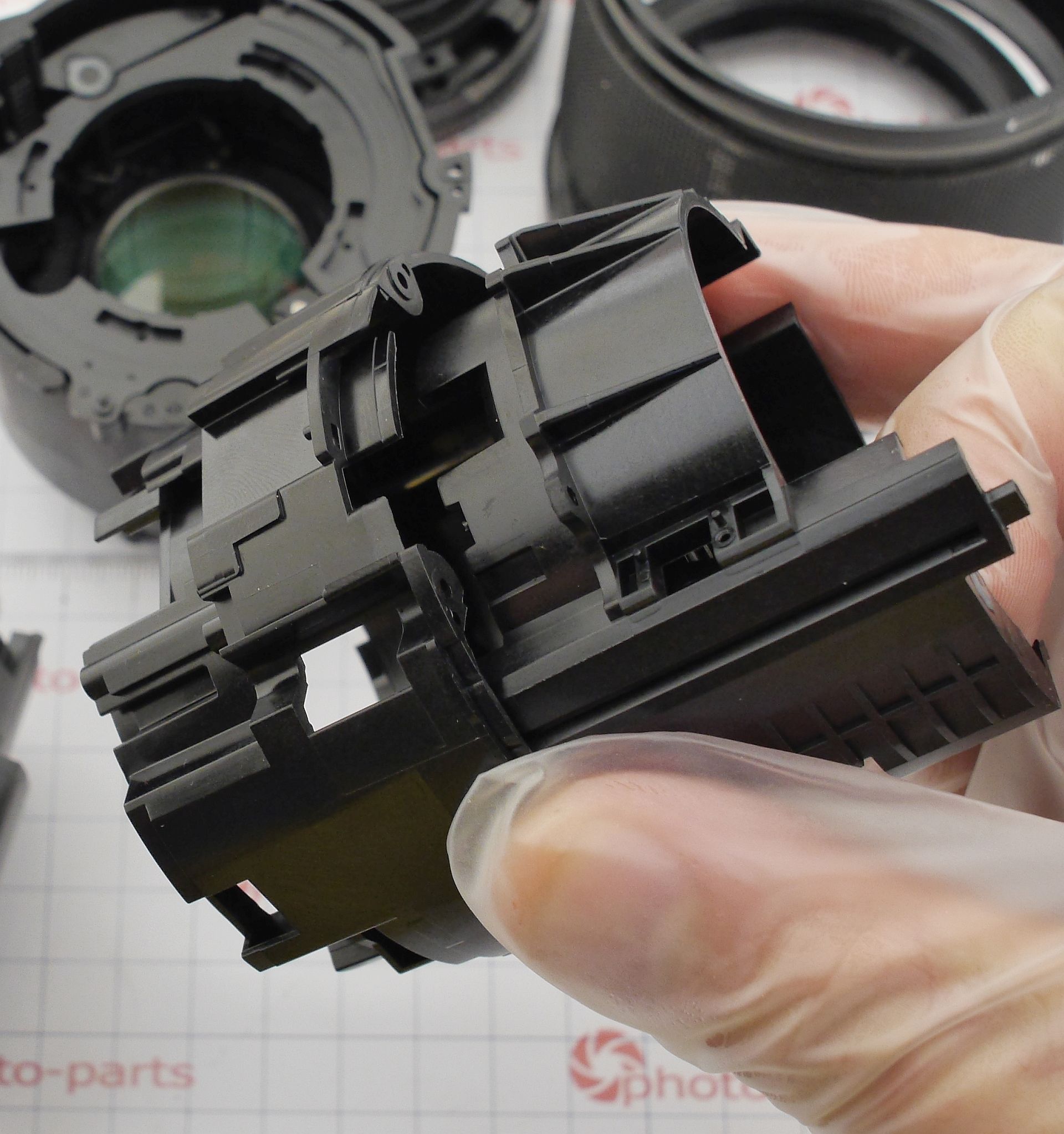
Unscrew the clamp holding the focus lens to the motor:
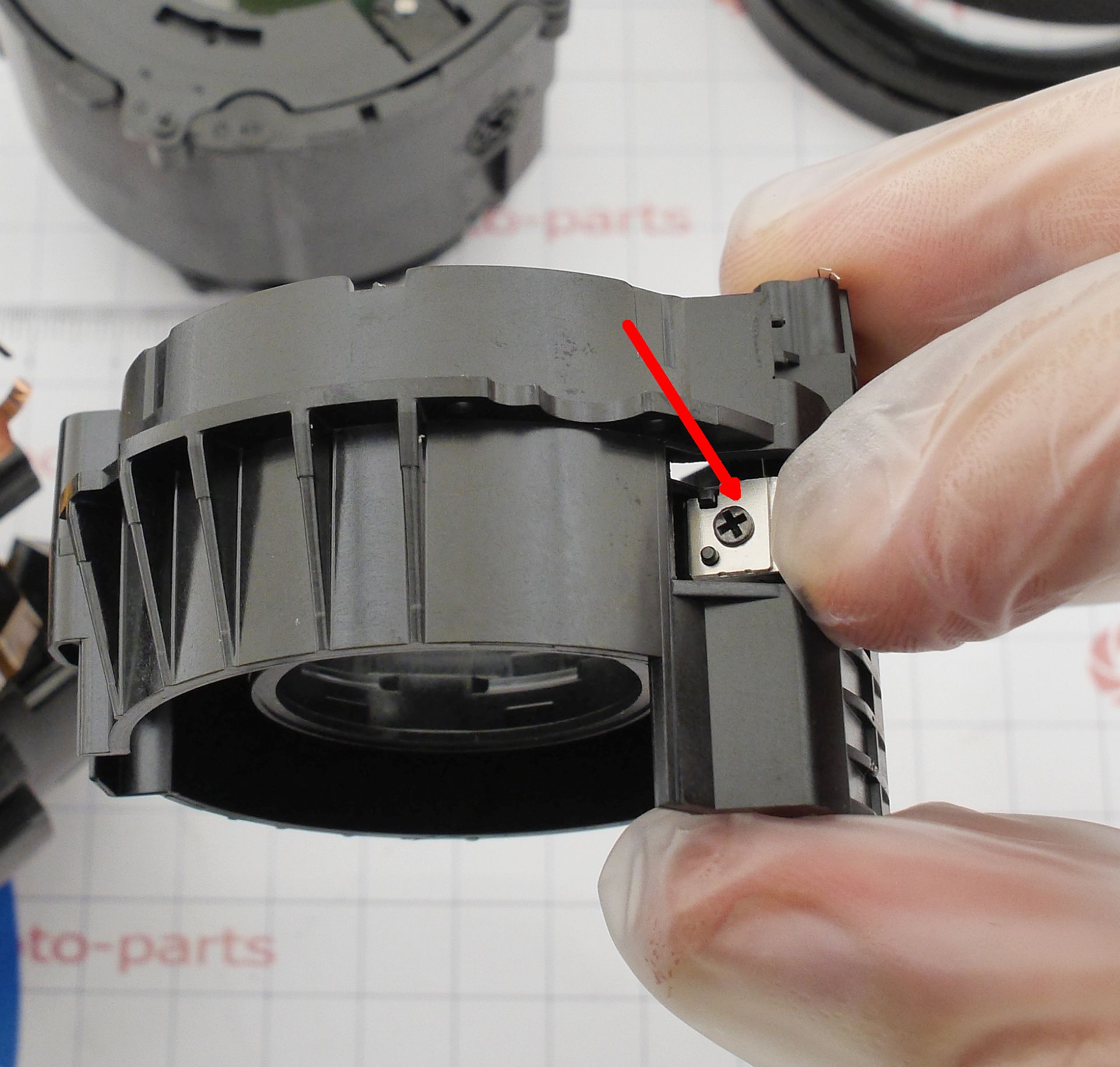
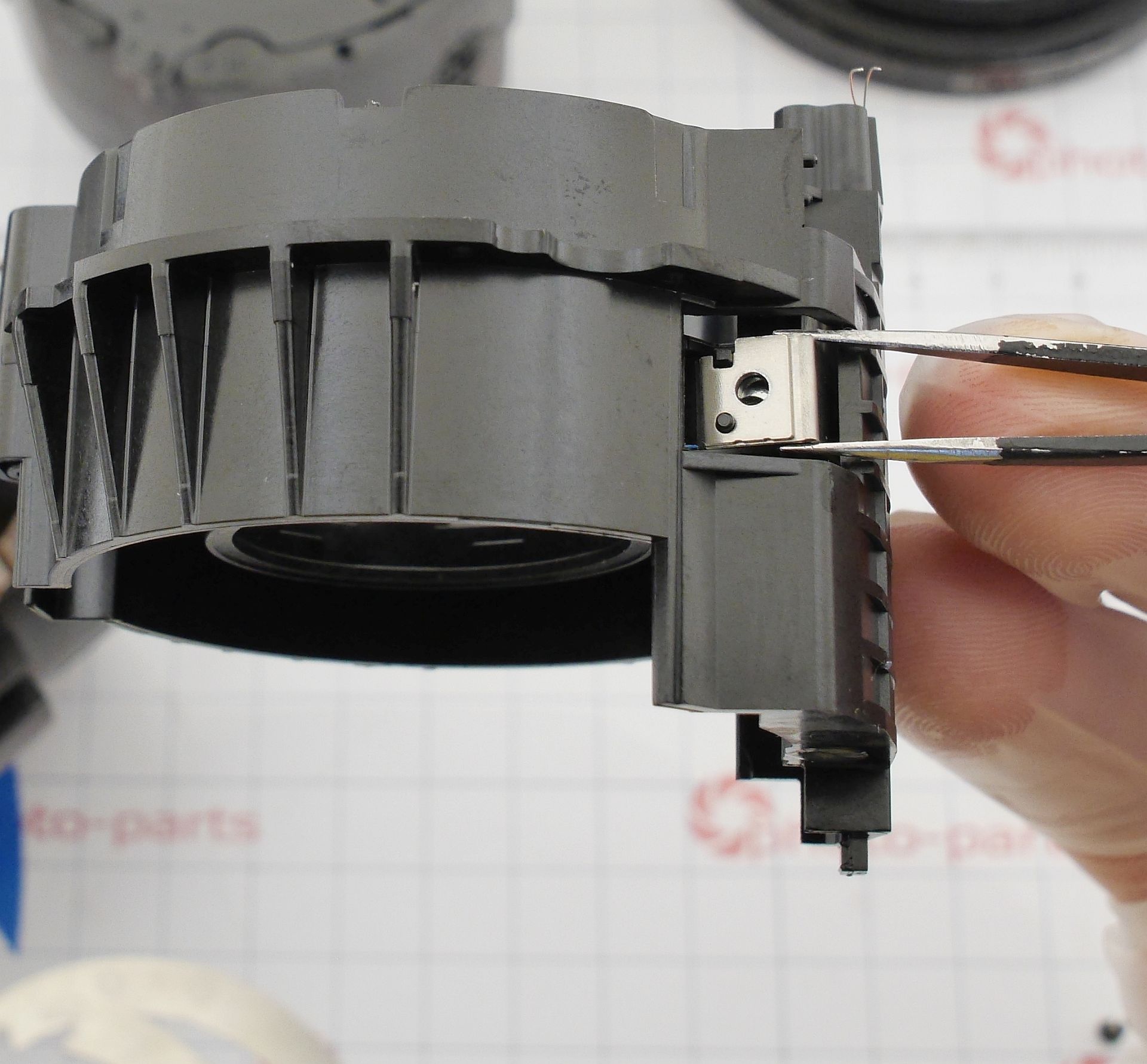
Then remove the unnecessary focus lens frame. Note that aside from the lens itself, there’s no magnetic strip here.
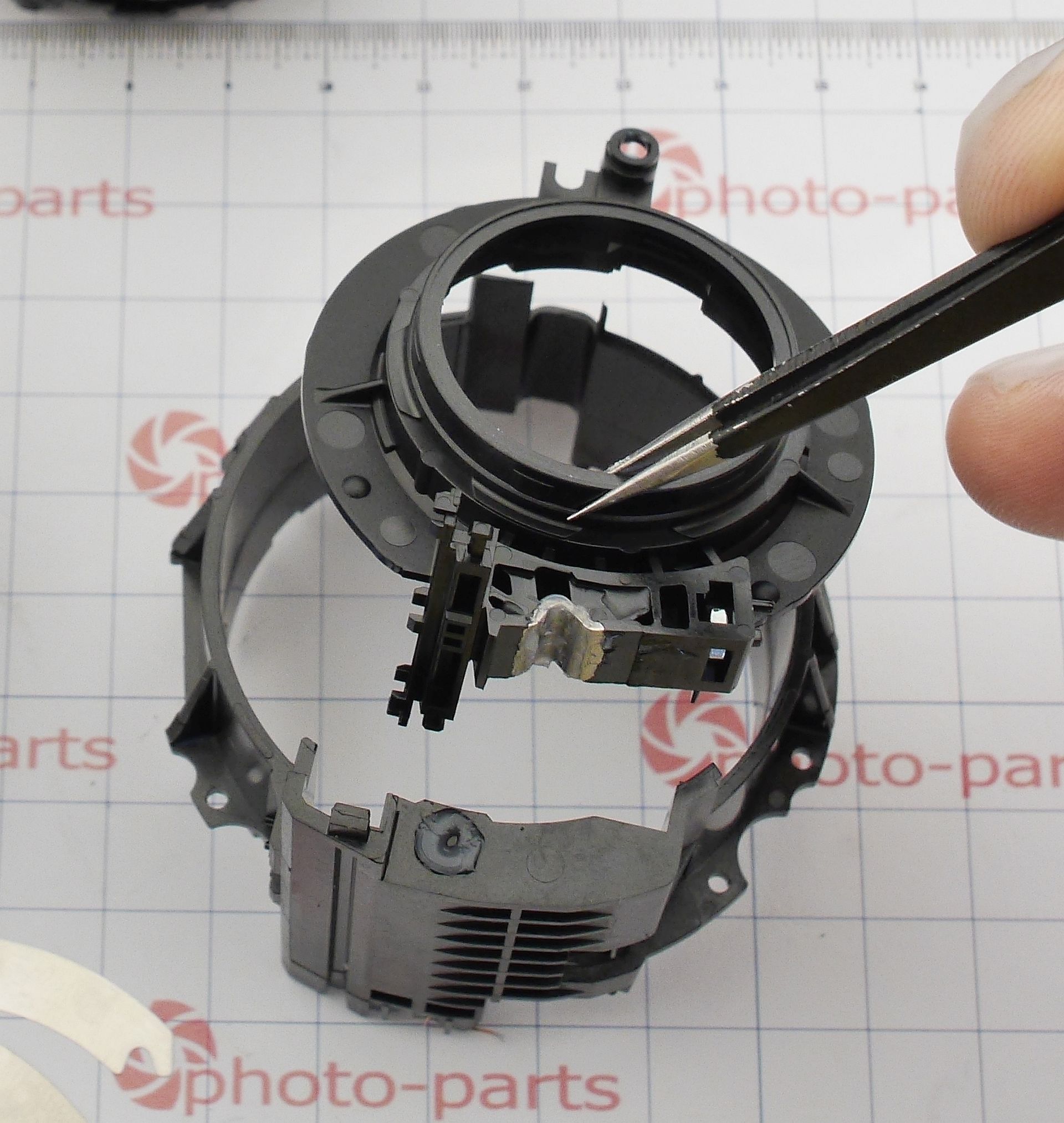
Now do the same for the old focus assembly. Separate it from the stabilization and aperture module:
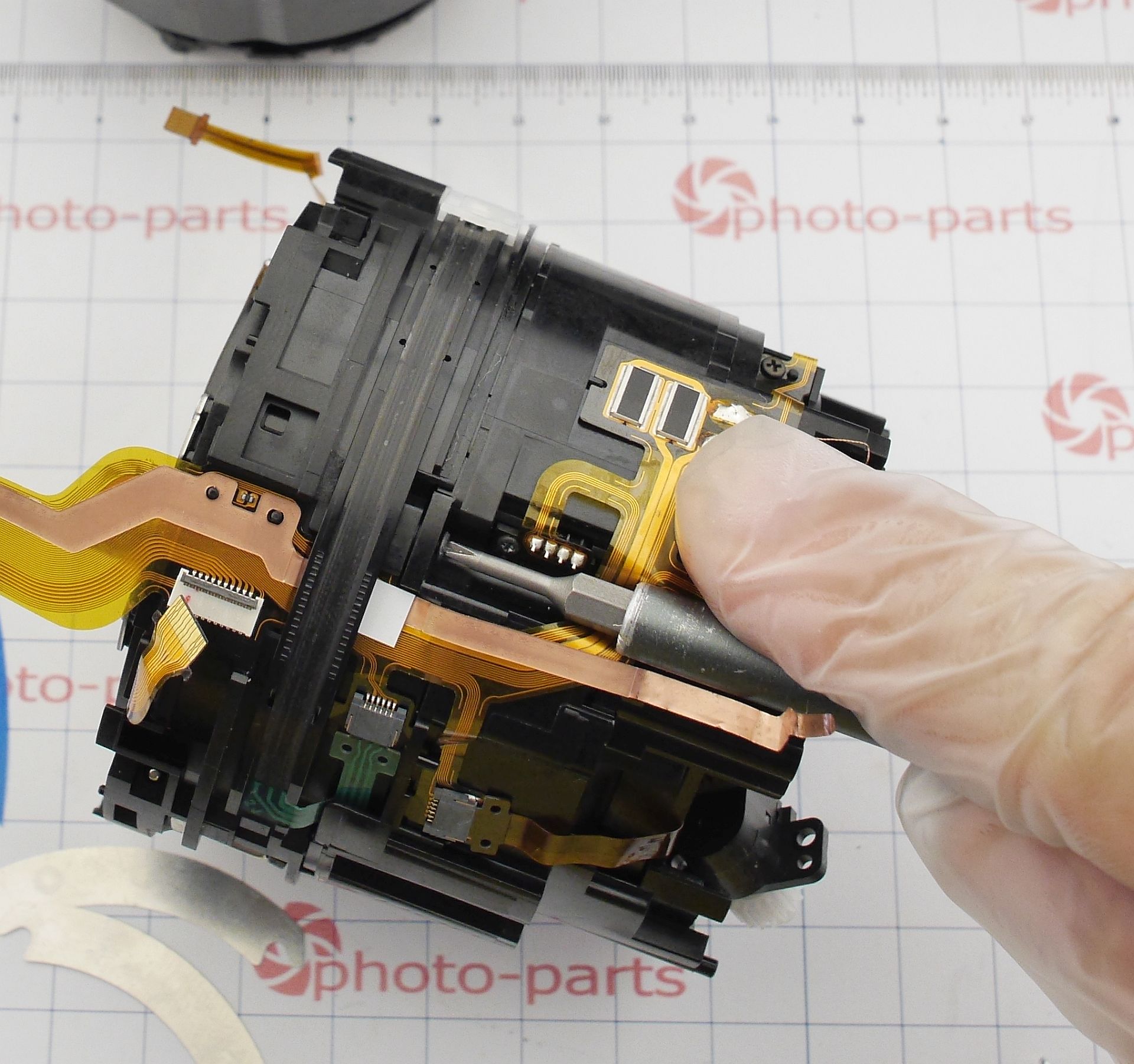
Then disconnect all sensors and flex cables:
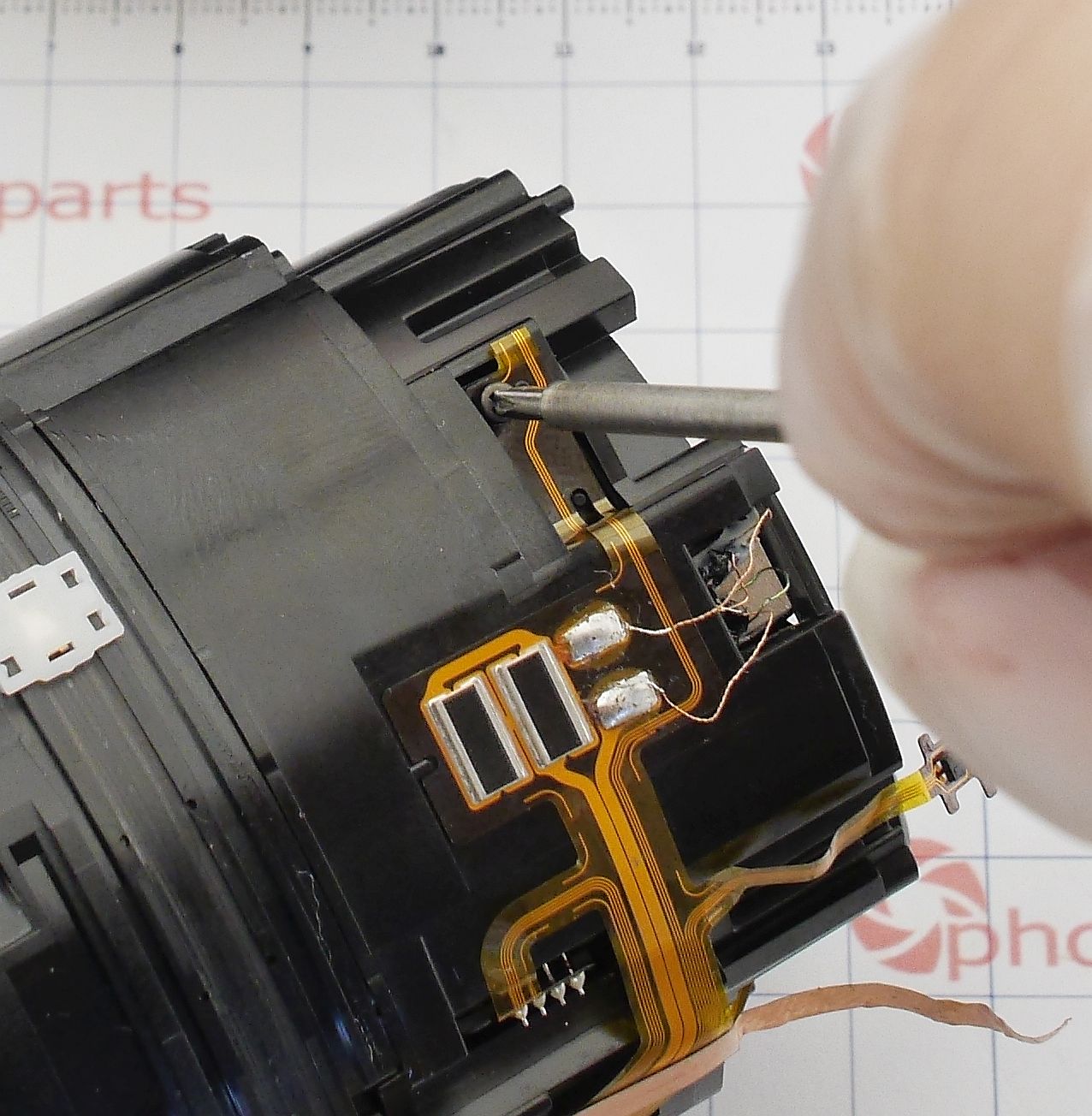
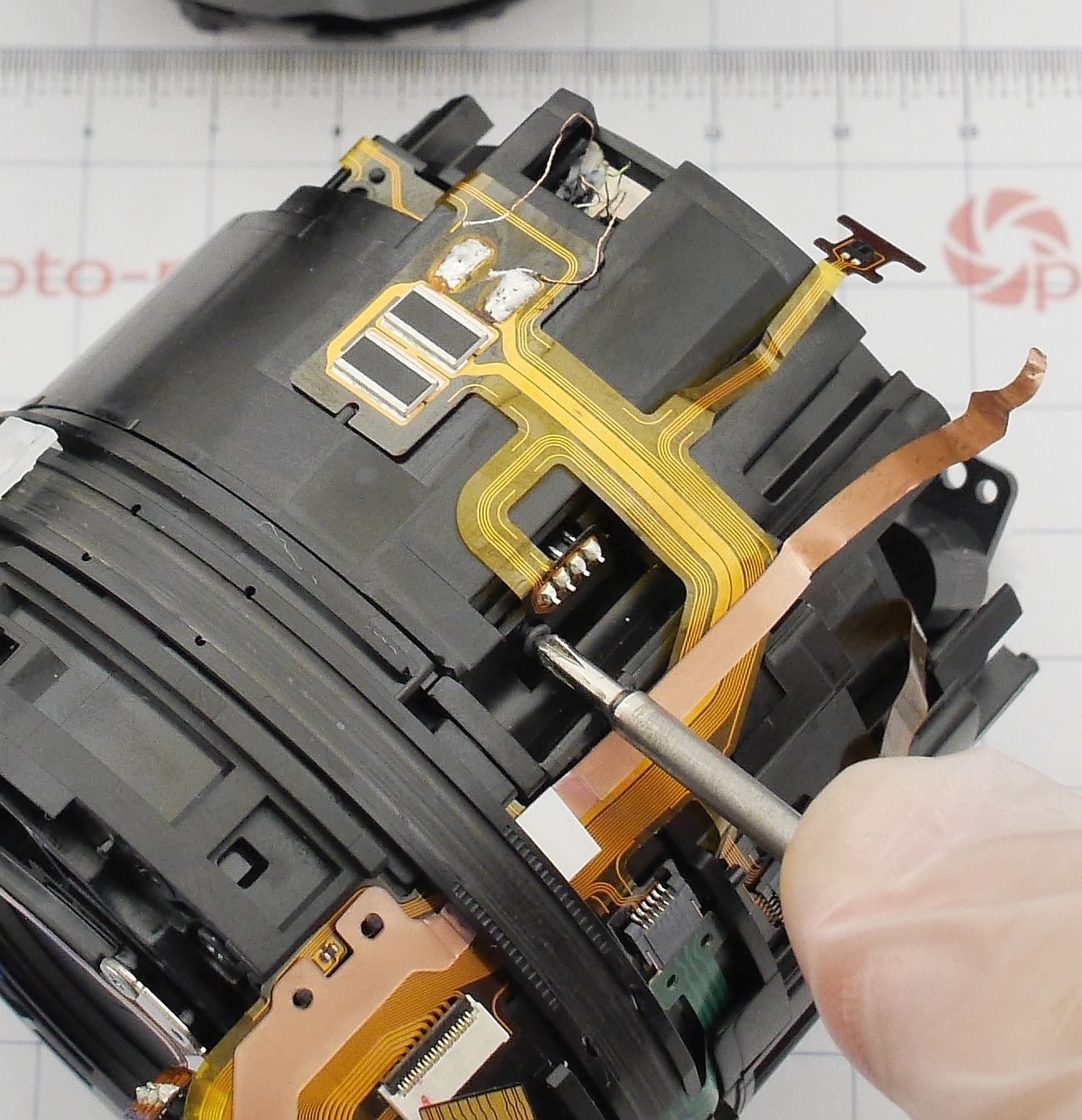
Desolder the old motor and the focus assembly can be removed:
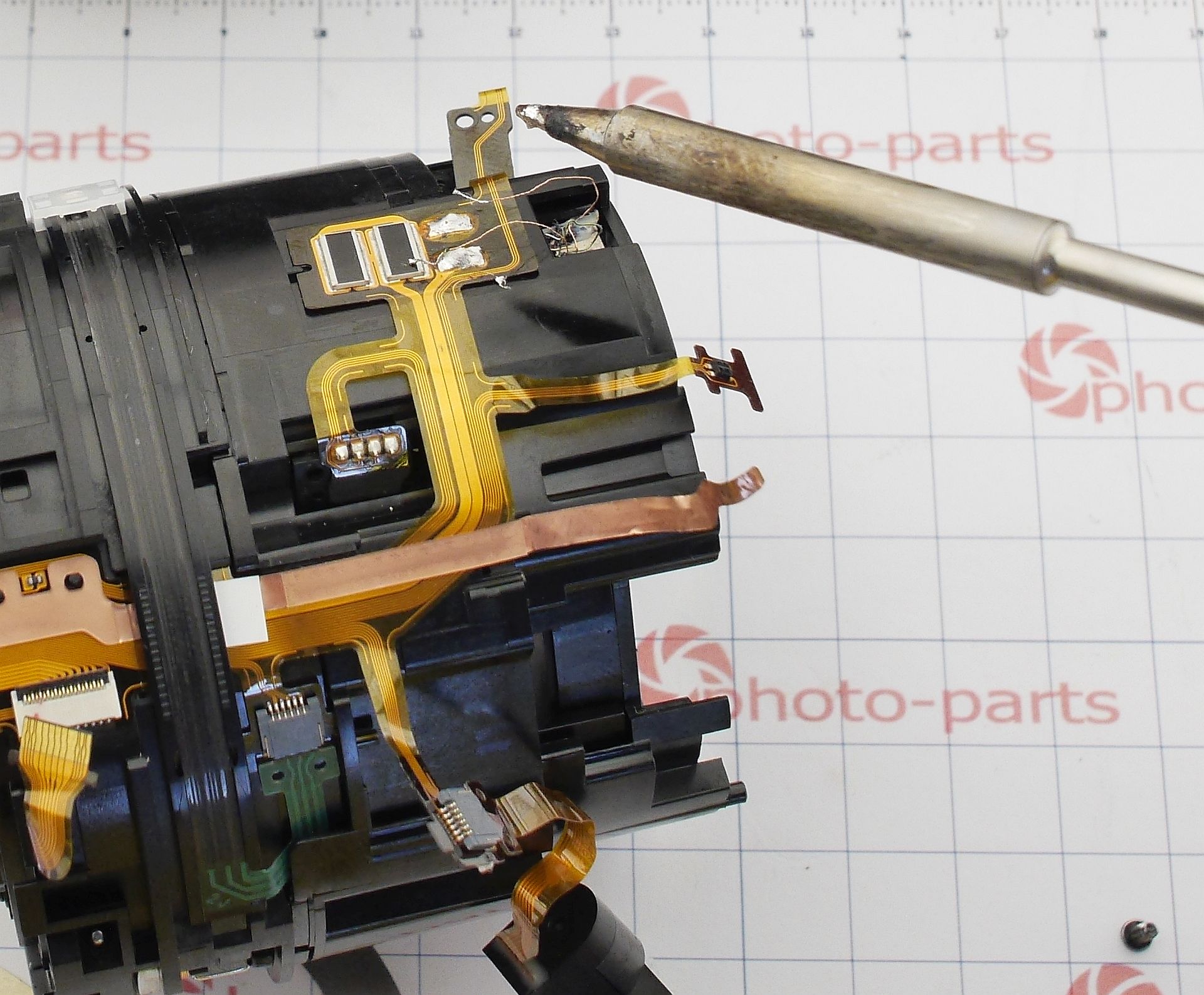
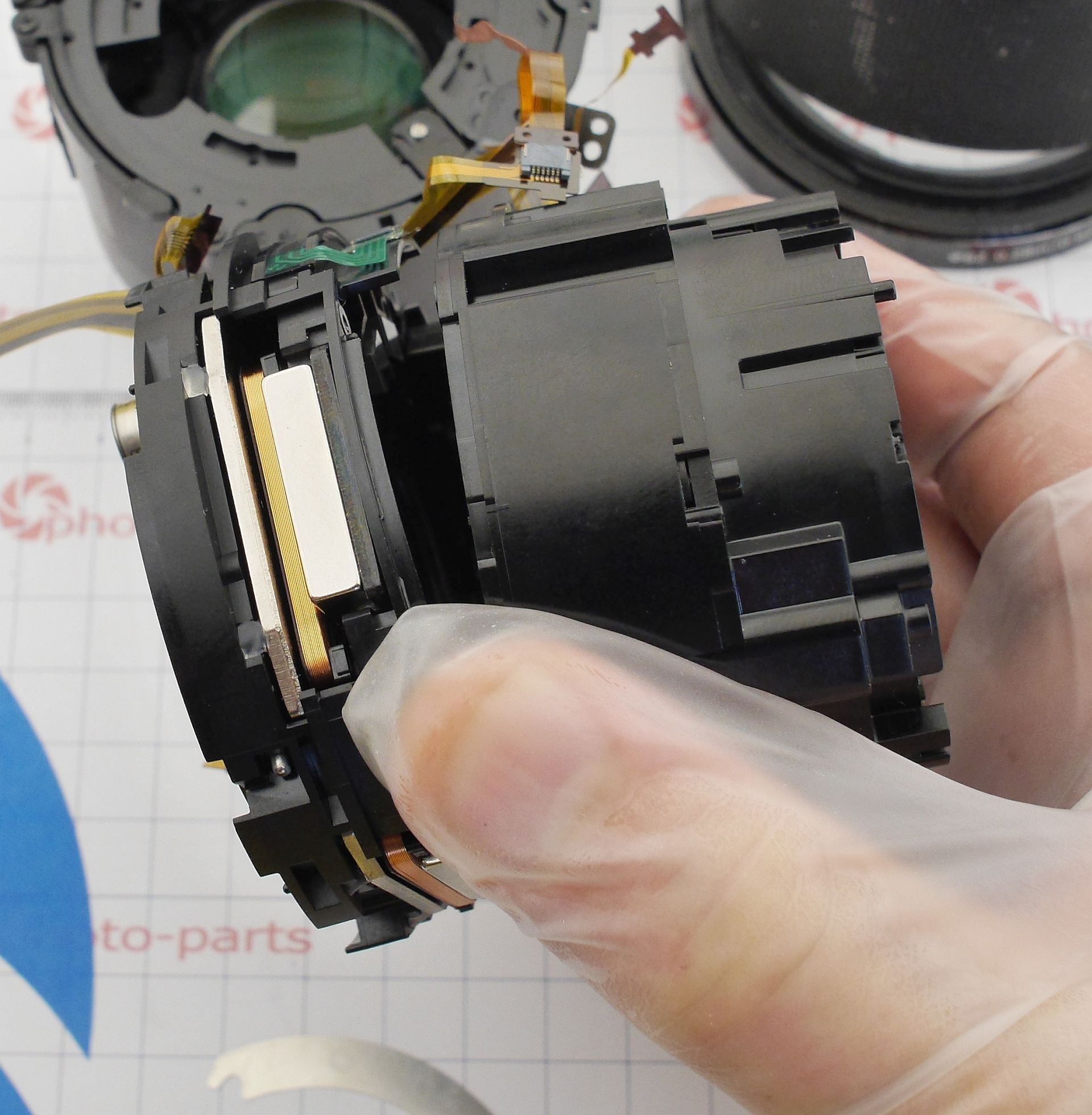
Repeat the disassembly steps for the original motor, remove the lens, and install it in the new motor housing as shown:
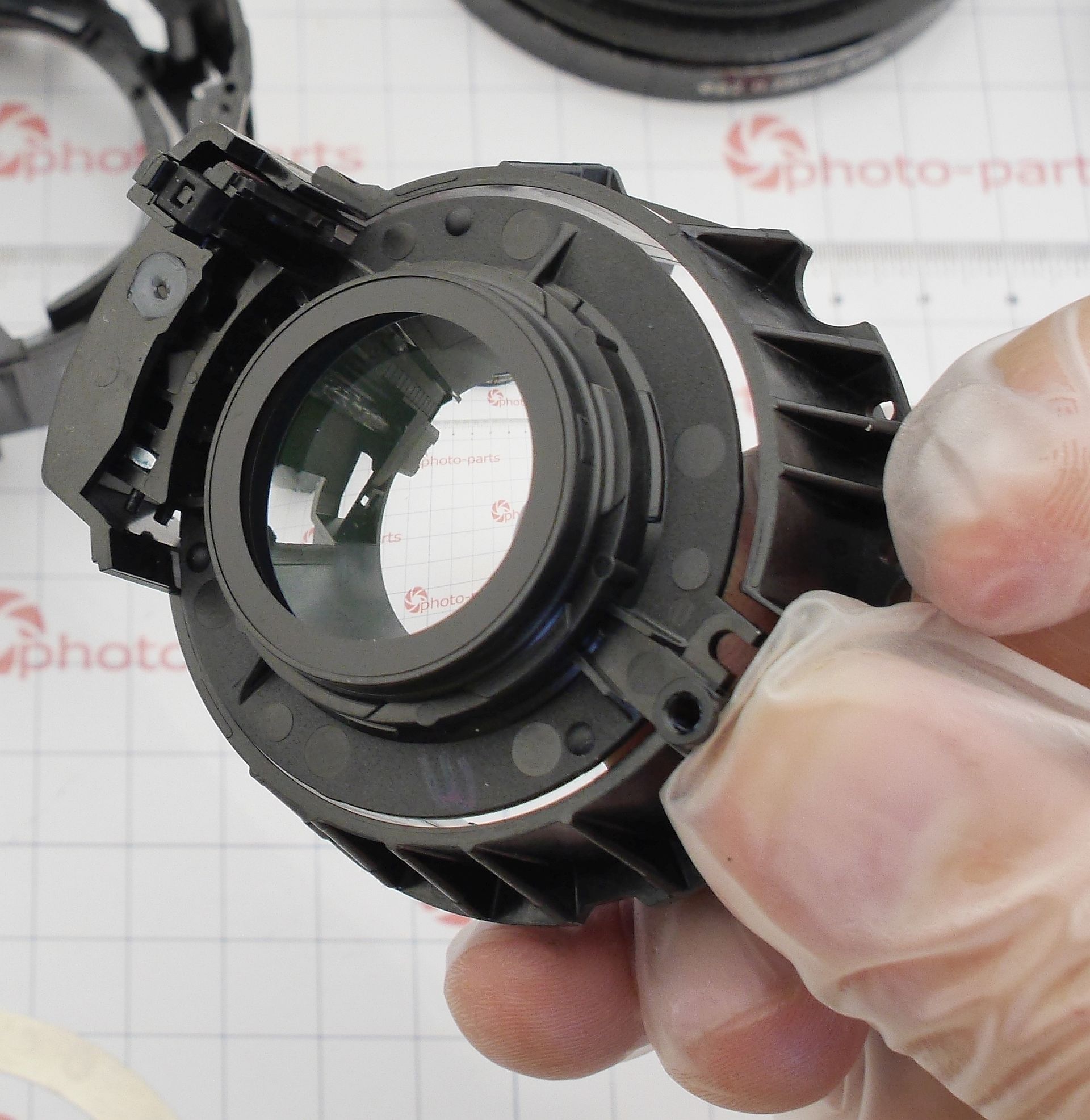
Tighten the clamp and reassemble everything in exact reverse order. Nothing tricky here. The new motor leads are soldered to the flex cable, observing correct polarity:
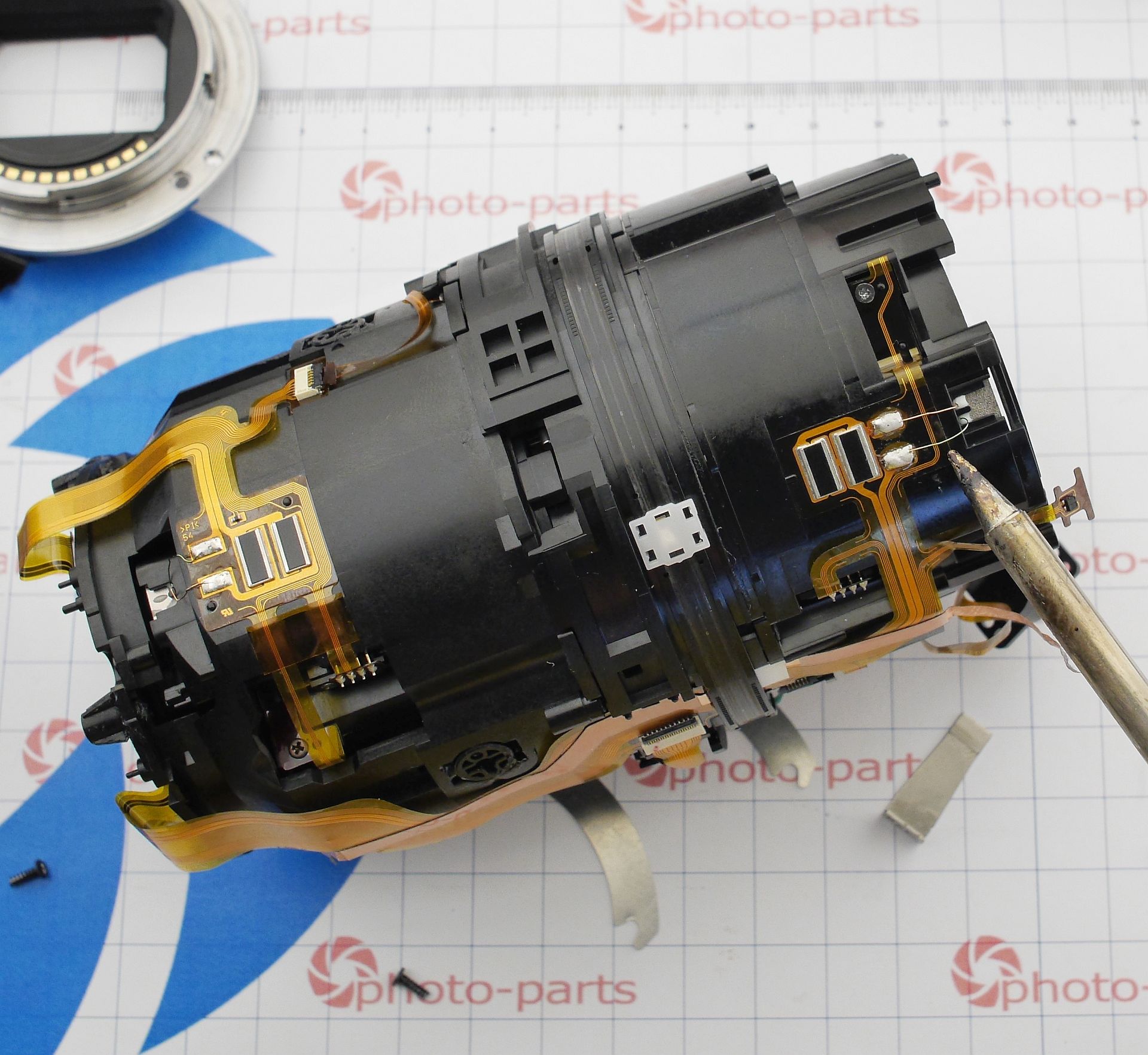
And since the title mentions “full teardown,” the disassembly sequence for the rear half of the lens is included below – from the mount side.
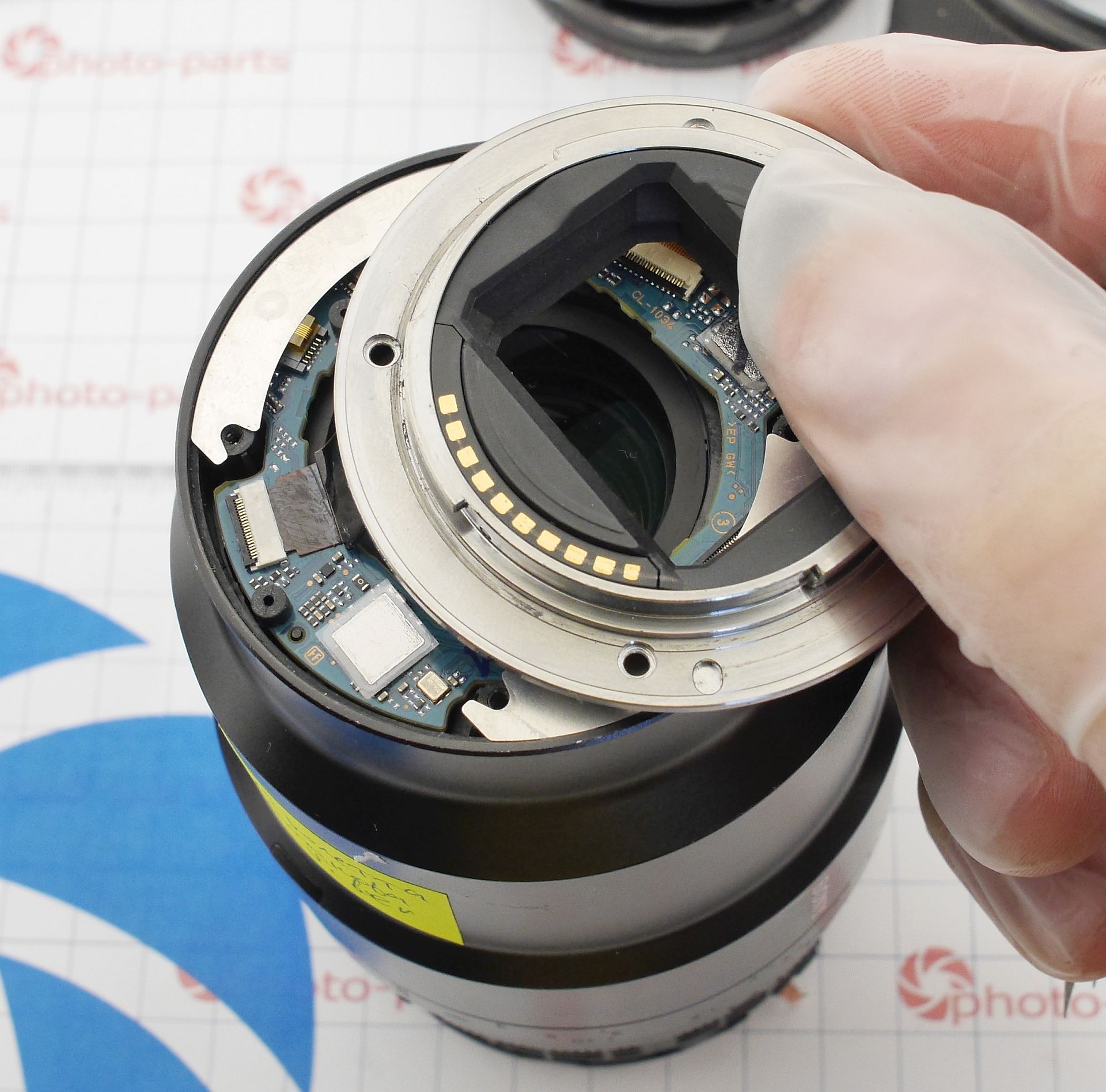
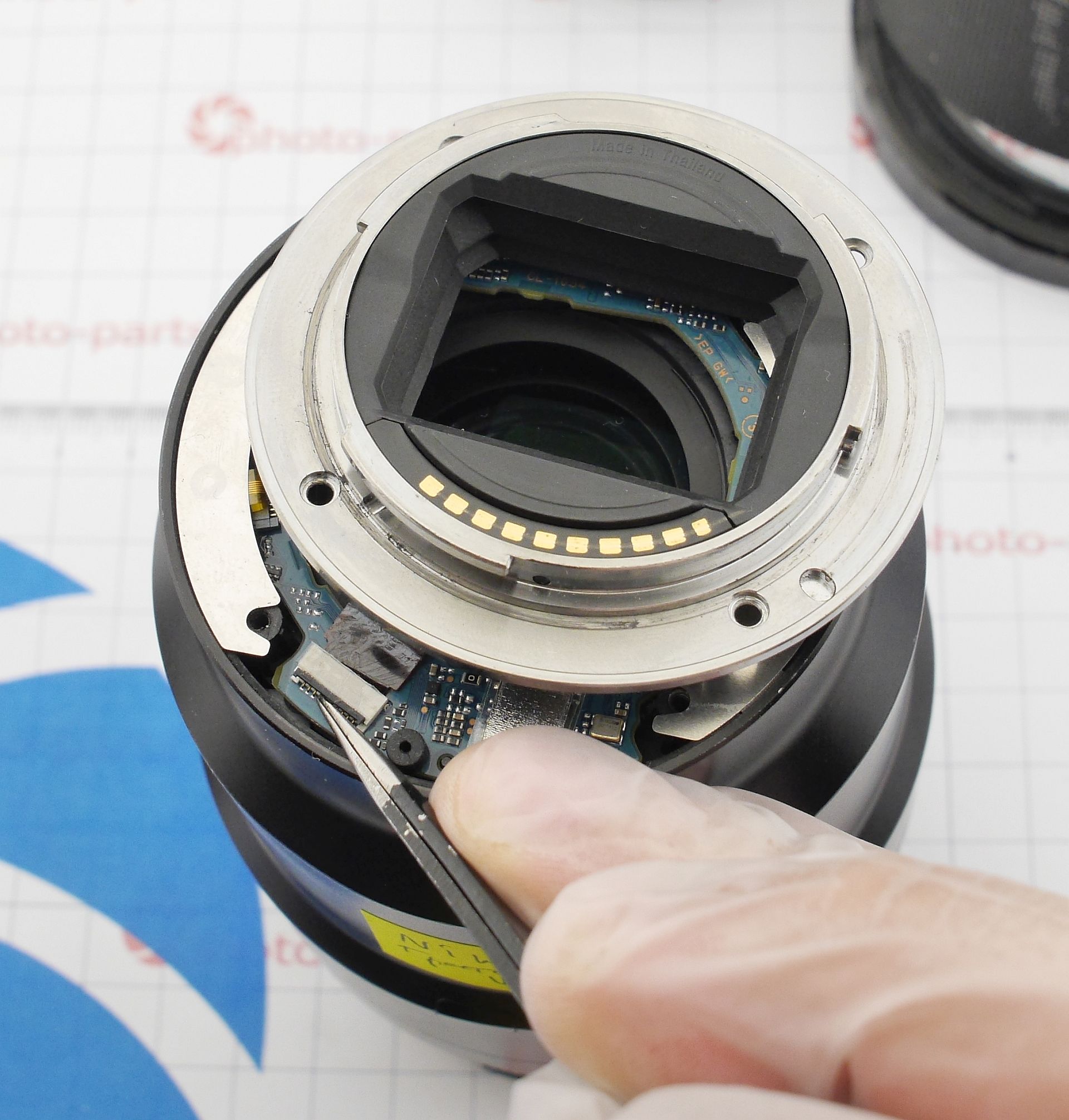
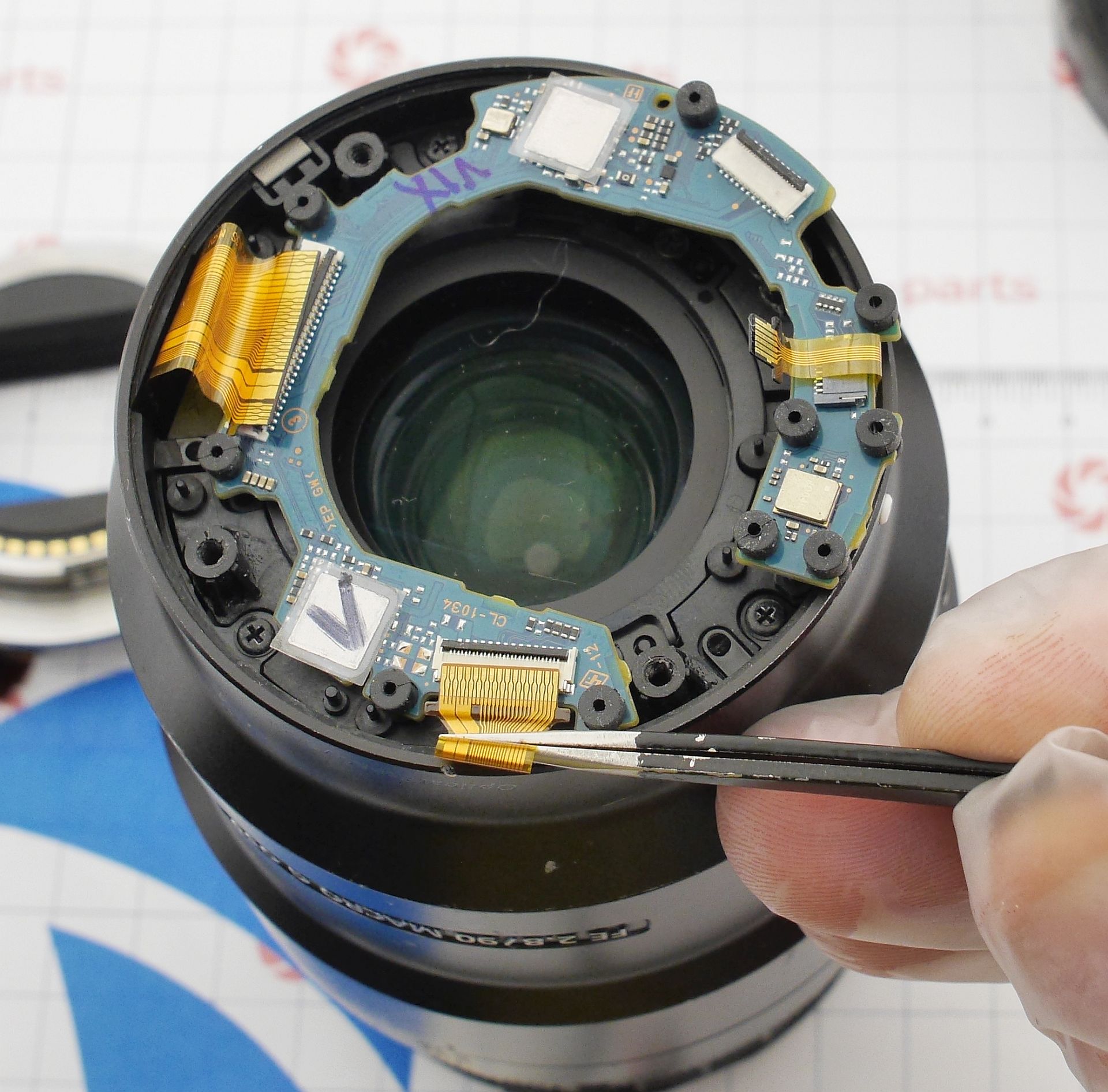
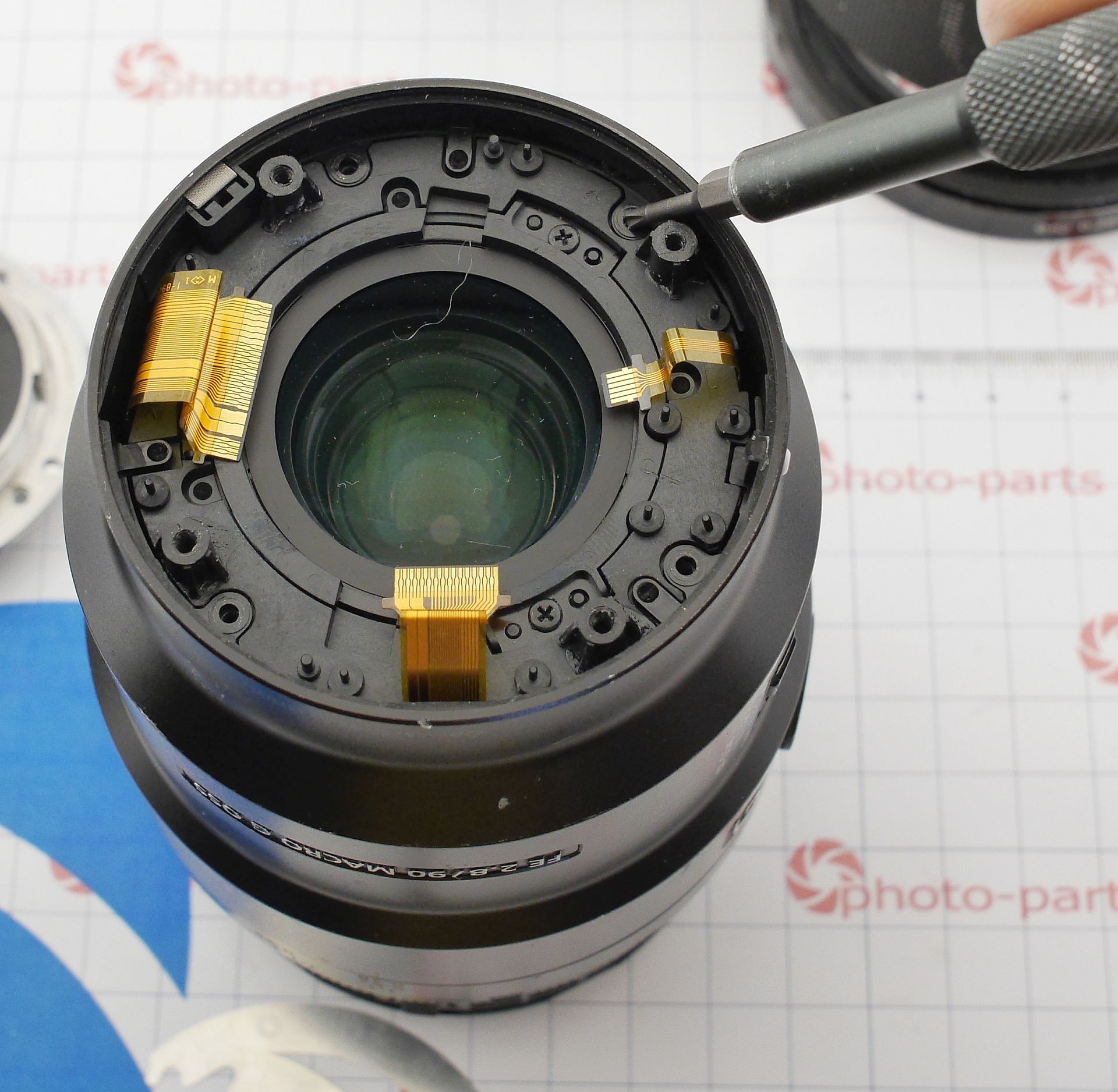
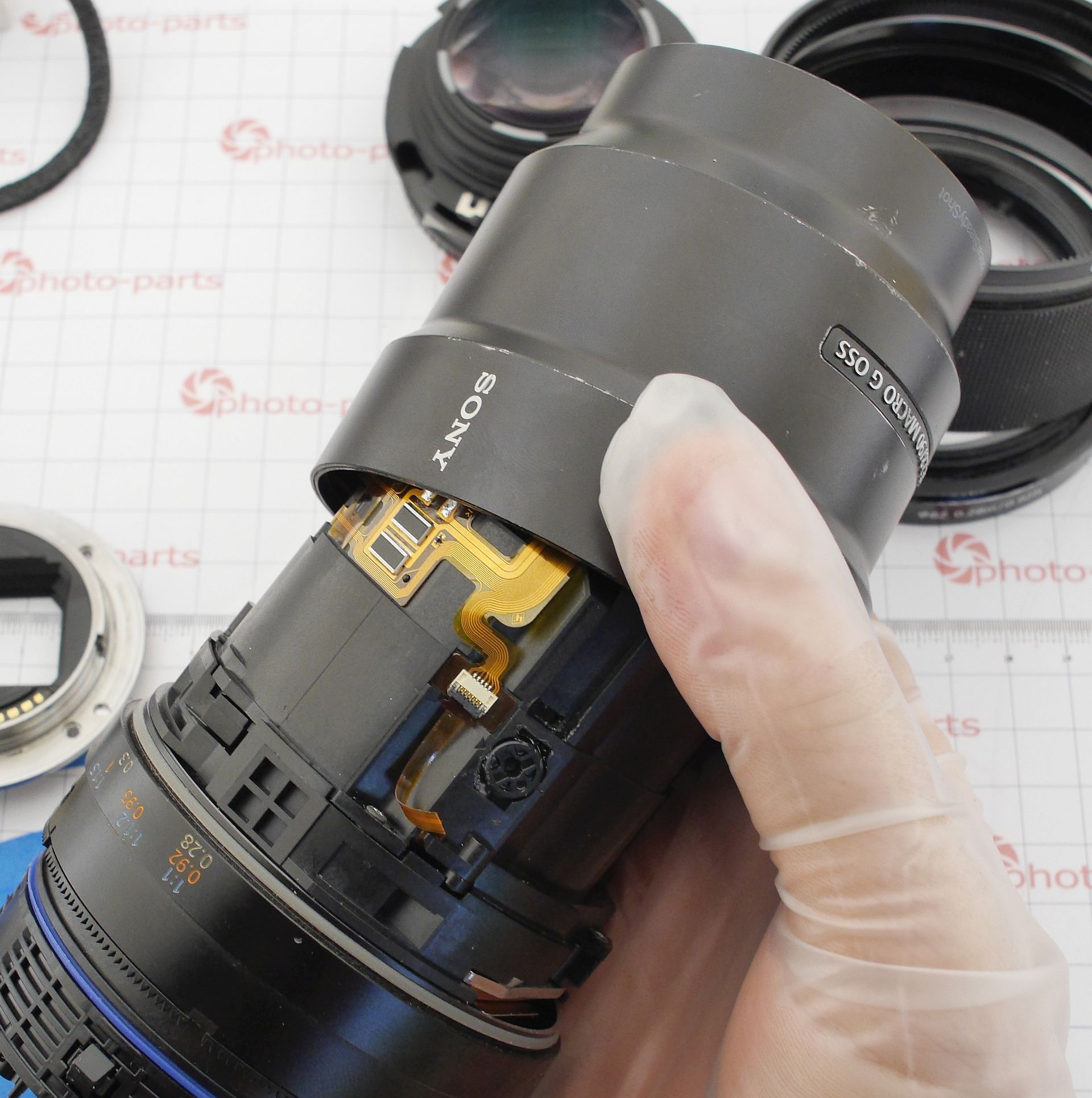
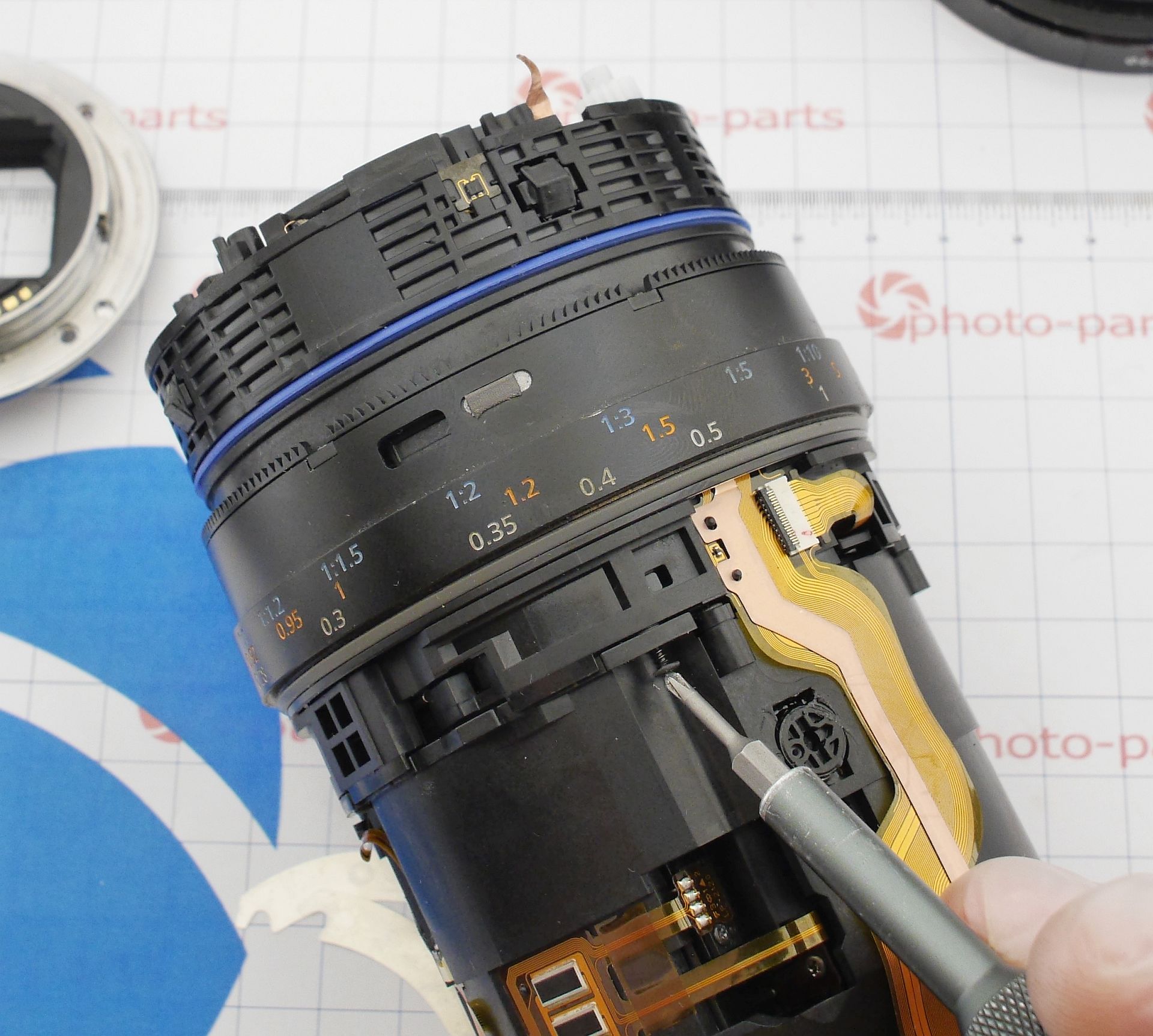
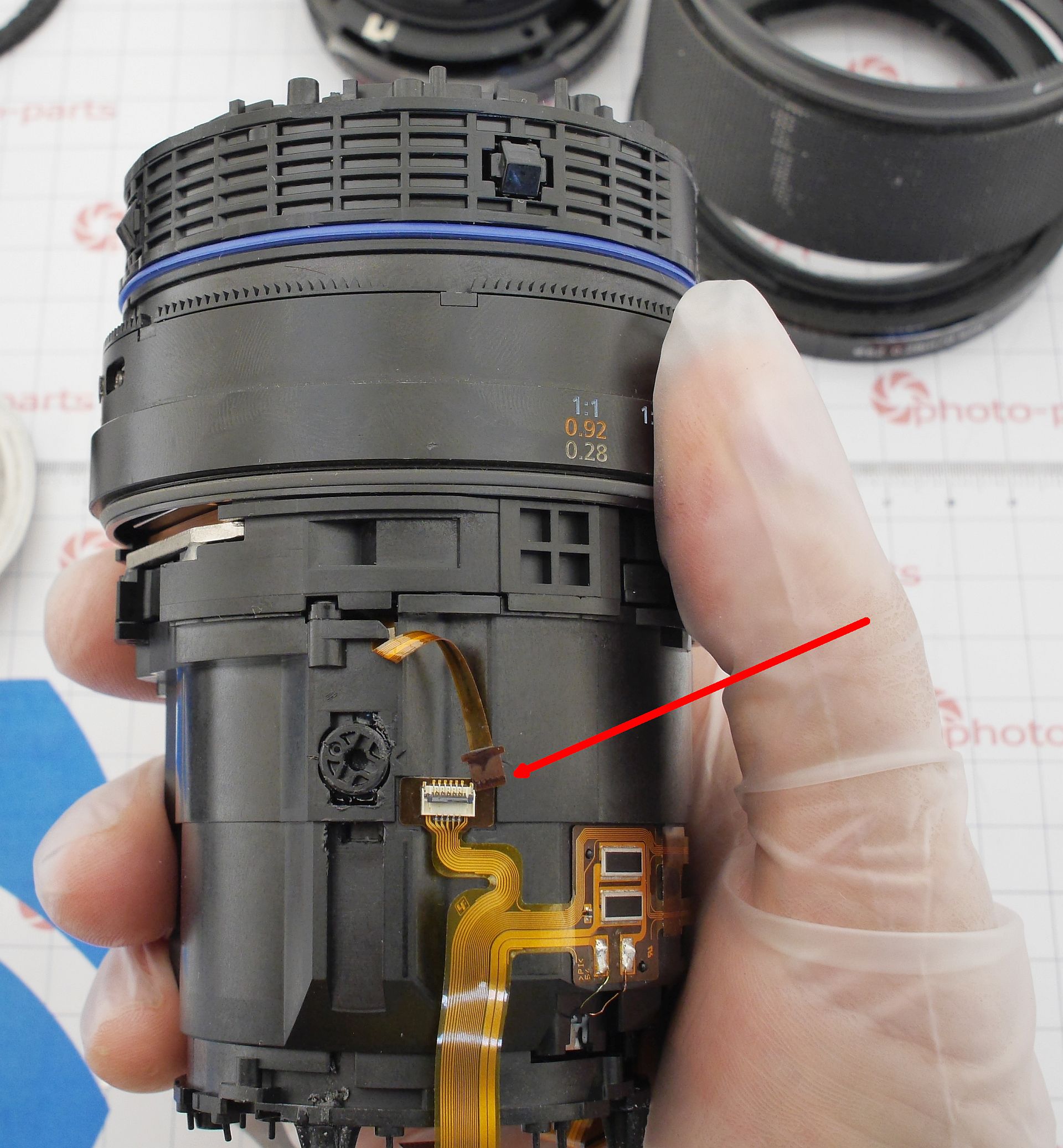
Take note of the alignment screws near the red arrow in the photo above. Don’t turn them – sharpness drops drastically with even the slightest shift. However, if the rear focus motor fails, alignment will have to be broken for replacement. Downside – it’s fiddly. Upside – this is the only lens group that needs calibration, and you still have access to the screws unless you reinstall the back cover.
Happy shooting with quality gear!
Add Comment
This policy contains information about your privacy. By posting, you are declaring that you understand this policy:
- Your name, rating, website address, town, country, state and comment will be publicly displayed if entered.
- Aside from the data entered into these form fields, other stored data about your comment will include:
- Your IP address (not displayed)
- The time/date of your submission (displayed)
- Your email address will not be shared. It is collected for only two reasons:
- Administrative purposes, should a need to contact you arise.
- To inform you of new comments, should you subscribe to receive notifications.
- A cookie may be set on your computer. This is used to remember your inputs. It will expire by itself.
This policy is subject to change at any time and without notice.
These terms and conditions contain rules about posting comments. By submitting a comment, you are declaring that you agree with these rules:
- Although the administrator will attempt to moderate comments, it is impossible for every comment to have been moderated at any given time.
- You acknowledge that all comments express the views and opinions of the original author and not those of the administrator.
- You agree not to post any material which is knowingly false, obscene, hateful, threatening, harassing or invasive of a person's privacy.
- The administrator has the right to edit, move or remove any comment for any reason and without notice.
Failure to comply with these rules may result in being banned from submitting further comments.
These terms and conditions are subject to change at any time and without notice.
Comments
I've actually found them now so no worries, new from Ali for £100